D3100: Dell USB 3.0 Docking Station — D3100 : Computer Docking Stations
Nikon D3100 Review — Operation
Camera Reviews / Nikon Cameras / Nikon Di Full Review
OperationViewfinderLive ViewModes & MenusVideo
Navigate Review Jump to review page…
Nikon D3100 Operation
Like the existing D3000 model, the Nikon D3100 is aimed at beginner and casual shooters, rather than professionals and hard-core SLR enthusiasts. It’s thus no surprise that the D3100 inherits an interface which is very similar to that of the D3000, with an uncluttered layout that places most controls in the same positions as in the earlier camera. There are a few differences, though, made to accommodate new features, bring existing ones out of the menu system, and reduce complexity. Perhaps the most visible change is a new Release Mode Selector lever, located at the base of the Mode dial on the top deck. Moving to the rear panel, Nikon has added a new Live View switch with central Movie Record button, providing a home for two important features that the D3000 lacked. Finally, the Information Edit button is now dedicated to its purpose, sitting adjacent to the Playback Zoom In button with which it previously served double duty.
Finally, the Information Edit button is now dedicated to its purpose, sitting adjacent to the Playback Zoom In button with which it previously served double duty.
Overall, the Nikon D3100’s design keeps the number of buttons, knobs and dials to a minimum. It replaces the top-panel data display traditionally found on more complex SLRs with a very attractive and logically laid-out information display on the large, rear-panel LCD screen. The mode dial is easily accessed with your thumb while you’re holding the grip, and sports a Guide mode aimed at making the camera even less intimidating to those who don’t yet understand the technical details of things like apertures, shutter speeds, and ISO sensitivities. The Guide menu not only helps beginners set the camera up to achieve the effects they desire, but also explains what settings changes have been made and why, providing a valuable learning opportunity. Experienced shooters may seldom if ever touch the Guide menu, but it could prove a lifesaver for less-experienced photographers, allowing the user manual to stay at home.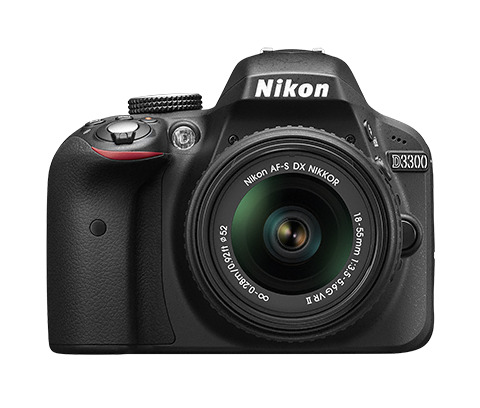
Nikon D3100 Shooting Mode
As with Nikon’s other recent consumer digital SLRs, the Nikon D3100 displays shooting info and settings on the main LCD when the Info button is pressed in record mode. There are two shooting display styles: the Graphic display which helps the user to visualize what’s happening with shutter speed and lens aperture, and the more conventional looking Classic format (see right), which displays the same basic settings information, but uses larger fonts and icons. I personally like the Graphic format a lot, but can see a time coming when my eyes will prefer the larger type of the Classic display. Unlike the D3100, you can’t choose different display formats for different camera operating modes. Instead, it’s a one-size-fits-all affair, with all exposure modes except Guide sharing the same display type. You can still change the color of the displays, though, with choices of green, black, or brown for the Graphic display, and blue, black, or orange for the Classic mode (as shown at right).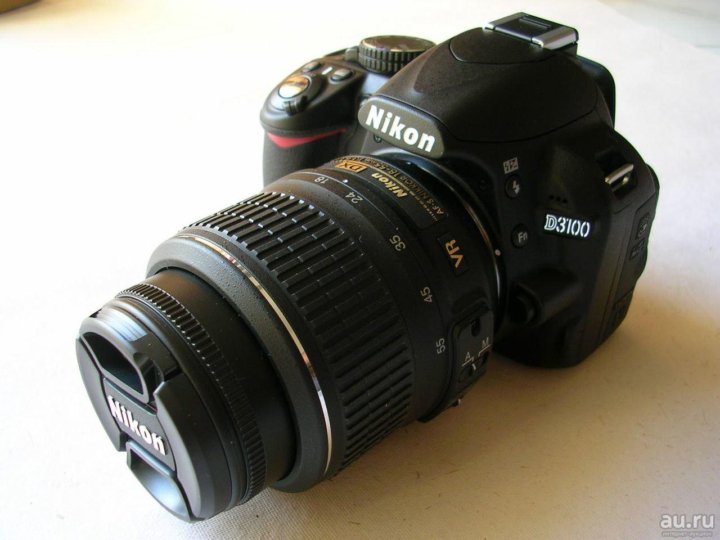
The illustration below (Courtesy of Nikon USA) shows the meaning of the various icons and readouts in the Graphic (top) and Classic (bottom) display modes.
1 | Shooting mode | 16 | Help icon |
2 | Aperture (f-number) | 17 | Exposure indicator |
3 | Shutter speed | Exposure compensation indicator | |
4 | Shutter speed display | Electronic rangefinder | |
5 | Aperture display | 18 | Number of exposures remaining |
6 | Auto-area AF indicator | 19 | «K» (appears when memory remains for over 1000 exposures) |
3D-tracking indicator | 20 | Flash mode | |
Focus point | 21 | Flash compensation | |
7 | Eye-Fi connection indicator | 22 | Exposure compensation |
8 | Date imprint indicator | 23 | Image quality |
9 | Manual flash indicator | Image size | |
Flash compensation indicator for optional flash units | 25 | White balance | |
10 | Auto ISO sensitivity indicator | 26 | ISO sensitivity |
11 | Picture control | 27 | Focus mode |
12 | Release mode | 28 | AF-area mode |
13 | Beep indicator | 29 | Metering |
14 | Battery indicator | 30 | Active D-Lighting |
15 | GPS connection indicator | 31 | Movie frame size |
There’s a lot of information shown there, but a logical layout and the large/sharp LCD screen makes it easy to tell what you’re looking at. The column of data down the right side of the screen and the row across the bottom of the screen represent settings you can adjust directly from this screen.
The column of data down the right side of the screen and the row across the bottom of the screen represent settings you can adjust directly from this screen.
As mentioned above, settings can be adjusted right in the shooting display by pressing the «i» button. The cursor keys can then be used to navigate to the setting you wish to change. The OK button is used to select the setting, and a new value or option is selected using the Up/Down cursor keys. For features that have a dedicated button (such as exposure compensation, shutter speed, etc.), the button is pressed and/or the command dial is used to change the value or option. The animation on the right shows the top-level contents of each item in the information display. As part of the Nikon D3100’s designed-in user-friendliness, most options on the shooting menu include «assist» images, to help you understand the types of shots or conditions for which each setting is most appropriate.
Nikon D3100 Playback Mode
Playback mode is entered by pressing the Playback button. The Nikon D3100’s Playback mode provides a great deal of information about your pictures after you’ve shot them. You can cycle through a variety of Playback displays using the up/down arrows on the multi-selector, including the image alongside either file information, basic shooting data and a luminance histogram, or an RGB histogram (if enabled in the display mode menu). Four further displays include the image with either three screens of overlaid shooting info and image parameter information, or the image with a blinking indication of clipped highlights. To reduce the number of button presses to get to your desired screen type, the highlights, RGB histogram, and info displays can be disabled in the display mode menu if you don’t use them Perhaps more unusually, the D3100 offers two slideshow-like transition effects, applicable not to the slide show function itself, but to when you switch between individual images or movies in the standard «image with file info» display type. It’s very much a consumer-oriented feature, but doesn’t slow the camera down as much as you might think, given that you can interrupt the transition effect to continue switching between images and movies.
The Nikon D3100’s Playback mode provides a great deal of information about your pictures after you’ve shot them. You can cycle through a variety of Playback displays using the up/down arrows on the multi-selector, including the image alongside either file information, basic shooting data and a luminance histogram, or an RGB histogram (if enabled in the display mode menu). Four further displays include the image with either three screens of overlaid shooting info and image parameter information, or the image with a blinking indication of clipped highlights. To reduce the number of button presses to get to your desired screen type, the highlights, RGB histogram, and info displays can be disabled in the display mode menu if you don’t use them Perhaps more unusually, the D3100 offers two slideshow-like transition effects, applicable not to the slide show function itself, but to when you switch between individual images or movies in the standard «image with file info» display type. It’s very much a consumer-oriented feature, but doesn’t slow the camera down as much as you might think, given that you can interrupt the transition effect to continue switching between images and movies.
The Nikon D3100’s histogram display modes are very useful tools. Regarded as almost mandatory by many pros for evaluating exposure levels, histogram displays are de rigeur on professional digital cameras, and common even in many amateur models these days. A histogram is simply a graph of how many pixels there are in the image at each brightness level. The brightness is the horizontal axis, running from black at the left to white at the right. The height of the graph shows the relative number of pixels having each brightness level. This sort of display is very handy for determining under- or overexposure. An underexposed image will have a histogram with all the data lumped on the left-hand side, with nothing reaching all the way to the right. Likewise, an overexposed image will have all the data lumped on the right side. The one defect of a luminance histogram is that it might not be obvious that there’s clipping if it is restricted to only one of the three color channels. The inclusion of an RGB histogram function hence allows the photographer to confirm that each individual color channel is correctly exposed, with no clipped values.
The inclusion of an RGB histogram function hence allows the photographer to confirm that each individual color channel is correctly exposed, with no clipped values.
Of course the Nikon D3100 also lets you zoom out to quickly find and select images, or magnify them for closer inspection on its 3.0-inch LCD. There is a calendar view as well as the normal 4-, 9-, or 72-image thumbnail displays available by pressing the thumbnail/zoom-out button, and you can magnify images up to approximately 27x for large, 20x for medium, and 14x for small images, using the zoom-in button. Once magnified, you can scroll around the image using the multi-selector to examine critical detail and framing, and you can view other images at the same zoom ratio using the command dial. The Nikon D3100 can detect up to 35 faces while in Playback mode. The camera highlights them with a white frame, and you can cycle through them at the current zoom ratio by holding the Info Display button while pressing the left or right arrow buttons, and zoom in or out on faces by holding Info Display and pressing the up or down arrow buttons. This makes focus verification of faces faster and more convenient.
This makes focus verification of faces faster and more convenient.
To return the Nikon D3100 to shooting mode, simply press the Playback button again, or half-press the shutter button.
Your purchases support this site
Buy the Nikon D3100
- Search on Amazon
- Search on Adorama
- Search on B&H Photo
Top Nikon Cameras
Nikon D3500
Nikon D5
Nikon D500
Nikon D5600
Nikon D610
Nikon D750
Nikon D7500
Nikon D850
Nikon P1000
Nikon Z6
Nikon Z7
Enter your photo
Dell D3100 Docking Station — Full Review and Benchmarks
Skip to main contentLaptop Mag is supported by its audience. When you purchase through links on our site, we may earn an affiliate commission. Here’s why you can trust us.
Laptop Mag Verdict
The Dell D3100 Docking Station is an affordable dock that supports three displays (one at 4K resolution) and has lots of port options.![]()
TODAY’S BEST DEALS
Cons
- —
No USB Type-C support
- —
Some performance hiccups when using three displays
If you have a 4K monitor and want to use additional FHD displays alongside it, the Dell D3100 provides an affordable way to connect those two or three monitors to your laptop. The $109 dock also includes five different USB ports for attaching peripherals, along with an Ethernet connector and audio jack. Users who want to connect over USB Type-C will need to buy a dongle, but otherwise, the D3100 is an inexpensive and compelling option that will work with most of today’s computers.
Design
The D3100 Docking Station is a matte-black plastic box that sits horizontally on your desk and looks just like other Dell docks, including the WD15. This one is particularly small, at 6.5 x 2.98 x 1.1 inches (the WD15 was deeper, at 6.1 x 4.3 x 0.83). The Plugable UD-3900 has a tiny base but stands 7. 5 inches tall.
5 inches tall.
Dell’s logo adorns the top of the dock in reflective black plastic, and the DisplayLink logo can be found on the front next to some USB ports. The bottom is covered with some nonslip rubber that will keep it in place under your monitor or behind your laptop. Unlike the
- Dell D3100 (Black) at Amazon for £158.06
Ports
The D3100 makes great use of space and is filled to the brim with ports. The front of the dock boasts three USB 3.0 inputs — one more than both the WD15 and UD-3900 — and a headphone and mic combo jack. The back is where you’ll find two USB 2.0 ports, the input for the power adapter, two HDMI ports and a DisplayPort for external displays, an Ethernet jack, a USB-B port for the cable that connects to laptops, and a jack for audio out.
If your monitor doesn’t support HDMI, the D3100 comes with one HDMI-to-DVI adapter so you can connect that way.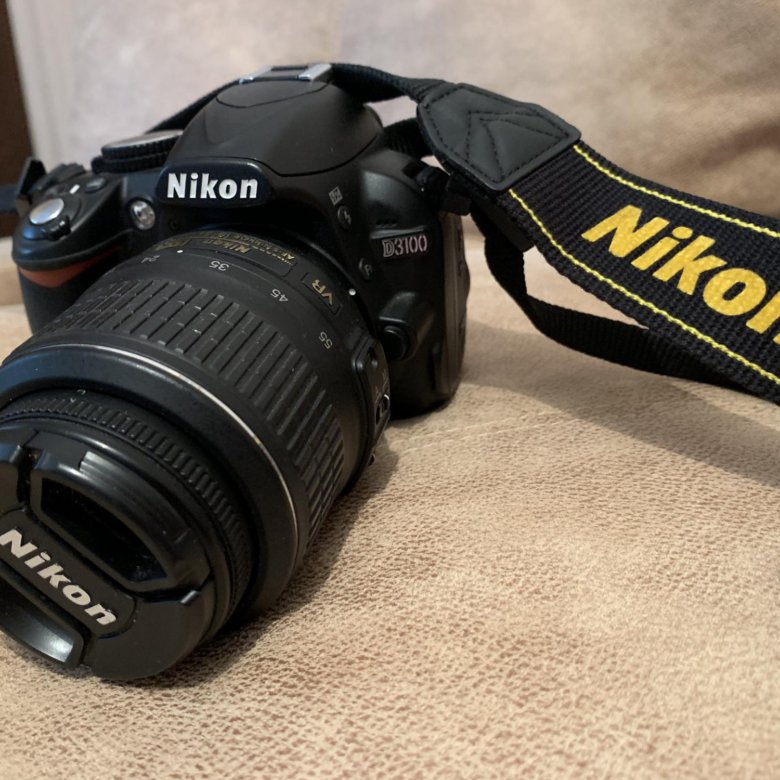 The dock doesn’t support USB Type-C officially, but I managed to get it to work with the 2016 12-inch MacBook by adding a USB-A-to-USB-C adapter (sold separately).
The dock doesn’t support USB Type-C officially, but I managed to get it to work with the 2016 12-inch MacBook by adding a USB-A-to-USB-C adapter (sold separately).
MORE: Most Awesomely Weird USB Gadgets
Performance
The Dell D3100 was easy to set up and worked consistently. After I installed DisplayLink drivers, it simply worked. It’s a nice departure from the WD15, which ditched DisplayLink in favor of USB Type-C’s alternate mode. I connected a $499 Dell Inspiron 17 5000 (Core i3-5010U processor, 4GB of RAM and 500GB HDD) to the dock for testing. It isn’t a powerhouse, but the average consumer may purchase it, especially at that bargain price.
The first test involved hooking up one monitor to the dock over DisplayPort, which output in beautiful, detailed 4K. Sample video featuring scenes of nature, a speeding car and trains moving in slow motion was clear and didn’t stutter at all, and there was barely a dent in CPU usage.
Next, I hooked up a second 4K display over HDMI — that one maxed out at 2560 x 1440, while the DisplayLink-connected monitor still output at 4K. (Only the DisplayLink port will drive monitors at 4K. HDMI will not.) The sample video continued to play smoothly while I used the second monitor to browse the web and typed in OpenOffice Writer on the laptop’s display. The task manager suggested that using two monitors took up 3 to 4 percent of CPU resources.
With three monitors plugged in, the HDMI-connected screens dropped to 2048 x 1152 with the DisplayPort monitor running at full 4K (all in addition to the screen built into the Inspiron). It was an insane setup, and I put it all to use, running the sample video on the 4K display, using TweetDeck on another, browsing the web on the third and using OpenOffice on the actual laptop. While the video played without any issues, I noticed some intermittent performance hiccups in Google Chrome and OpenOffice when typing and scrolling. With all three displays connected, the dock consumed 2 to 7 percent of CPU resources.
With all three displays connected, the dock consumed 2 to 7 percent of CPU resources.
MORE: Most Awesomely Quirky USB Keys
The D3100 docking station doesn’t support USB Type-C, but I used a USB-A to USB Type-C adapter to get it to work with the latest 12-inch MacBook, which powered all three displays with the dock. It overpowered the CPU, though, and a mix of 4K video and web browsing slowed down some animations at the operating system level, like opening and minimizing apps from the dock. If you use a USB Type-C adapter, it won’t charge the laptop, so be sure to keep your power brick at the ready.
Bottom Line
The Dell D3100 Docking Station is an affordable option that supports a 4K display as well as two other monitors to go along with it. The design is unobtrusive, and the extra USB 3.0 port is a plus. It doesn’t support USB Type-C, though, so you’ll need to go elsewhere (like Plugable’s upcoming USB-C Triple Display Dock) for full future-proofing.
A price of $109 is a great deal for three displays, though lower-end laptops may see a few hiccups here and there. If you don’t need 4K at all or just want to spend a little bit less money, you should check out Plugable’s UD-3900 for $95, but that only supports two screens. Power users will want to check out the D3100 and its triple-monitor support.
- 100+ Tech Gift Ideas for Men, Women and Kids
- Our Favorite Tablets for Work and Play
- The Best Laptops for Business and Productivity
TODAY’S BEST DEALS
| Accessories Type | Laptop Accessories |
| Brand | Dell |
| Company Website | dell.com |
| Size | 6.5 x 2.98 x 1.1 inches |
| Weight | 0.58 pounds |
Less
Laptop Mag is part of Future plc, an international media group and leading digital publisher. Visit our corporate site .
©
Future Publishing Limited Quay House, The Ambury,
Bath
BA1 1UA.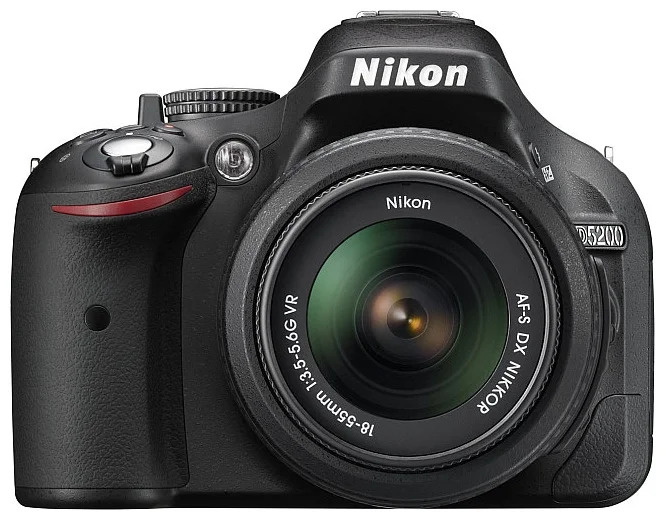 All rights reserved. England and Wales company registration number 2008885.
All rights reserved. England and Wales company registration number 2008885.
Nikon D3100 Review | Camera Decision
Select a Camera to Compare
x
Add a Camera for comparison
Main Features
- 14MP — APS-C CMOS Sensor
- ISO 100 — 3200( expands to 12800)
- 3.00″ Fixed Type Screen
- Optical (pentamirror) viewfinder
- 3.0fps continuous shooting
- 505g. 124 x 96 x 75 mm
- Replaced Nikon D3000
- Replaced by Nikon D3200
CHECK PRICE
CHECK PRICE
Nikon D3100 Overview
First introduced in December 2010 , Nikon D3100 is a 14.0MP Entry-Level DSLR camera with a APS-C (23.1 x 15.4 mm ) sized CMOS sensor and Nikon F lens mount.
Nikon replaced the older Nikon D3000 with this model and later D3100 was replaced with Nikon D3200. Follow the links to compare these cameras in detail: Compare Nikon D3100 vs Nikon D3000
Compare Nikon D3100 vs Nikon D3200
Nikon D3100 Review — Click for Table of Contents
- Overview
- Pros and Cons
- Lens Mount and Lenses
- Sensor and Photography Features
- Physical Specs
- LCD and Viewfinder
- Connectivity, Storage and Battery
- Video
- Other Features
- Photography Type Scores
- Alternatives
- Popular Comparisons
- Frequently Asked Questions
- Detailed Specifications
Nikon D3100 is a member of Nikon’s D3000 series of cameras. D3000 series of cameras are Nikon’s entry level DSLR cameras and very popular especially as a first entry point to the world of interchangeable lens cameras thanks to its perfect combination of compact size, great image quality, big selection of lenses and affordable prices. Below you can see the latest models in this series and how their main specs have changed with each new version.
D3000 series of cameras are Nikon’s entry level DSLR cameras and very popular especially as a first entry point to the world of interchangeable lens cameras thanks to its perfect combination of compact size, great image quality, big selection of lenses and affordable prices. Below you can see the latest models in this series and how their main specs have changed with each new version.
Nikon D3000 Series History
| Model | Release Date | Sensor | Max FPS | Dimensions | Weight | |
|---|---|---|---|---|---|---|
| Nikon D3500 Compare | 2018 | 24.0MP — APS-C | 5.0 fps | 124 x 97 x 70mm | 365g | |
| Nikon D3400 Compare | 2016 | 24.0MP — APS-C | 5.0 fps | 124 x 98 x 76mm | 395g | |
| Nikon D3300 Compare | 2014 | 24. 0MP — APS-C 0MP — APS-C | 5.0 fps | 124 x 98 x 76mm | 430g | |
| Nikon D3200 Compare | 2012 | 24.0MP — APS-C | 4.0 fps | 125 x 96 x 77mm | 505g | |
| Nikon D3100 | 2010 | 14.0MP — APS-C | 3.0 fps | 124 x 96 x 75mm | 505g |
Check the link below to compare specs of the latest cameras in this series side by side:
Nikon D3500 vs D3400 vs D3300 vs D3200 vs D3100
**This post contains affiliate links and I will be compensated if you make a purchase after clicking through my links. As an Amazon Associate I earn from qualifying purchases.
Related Blog Posts
Fujifilm X-h3 vs X-h3s: 10 Main Differences
Fujifilm X-h3 Specs Leaked: with 40.2MP Sensor and 8K Video Recording
Panasonic Lumix S 18mm f/1.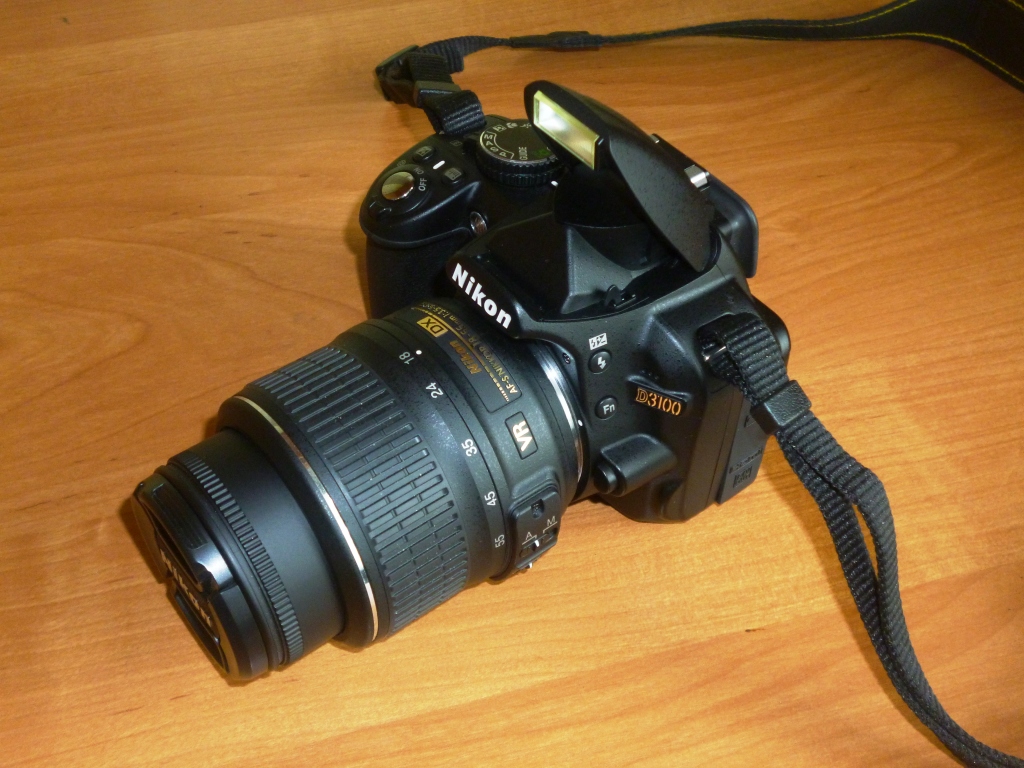 8 Images and Specs Leaked
8 Images and Specs Leaked
Nikon Z30 vs Sony ZV-E10 Size Comparison
New Insta360 One RS 1-Inch 360-Degree Camera Shoots 6K Video and 21MP Stills
Huion Kamvas Pro 16-inch 2.5K Drawing Tablet Review
Sony FE 100-400 E vs Canon 100-500 RF vs Nikon Z 100-400 vs Canon RF 100-400 Lens Size Comparison
Tamron 17-70 F2.8 vs Fujifilm 16-55 F2.8 vs Fujifilm 16-80 F4 vs Fujifilm 18-55 F2.8-4 Lens Size and Specs Comparison
Nikon D3100 PROs and CONs Review
Now let’s get in to more details of our Nikon D3100 review by analysing its specs and features and listing out its pros and cons compared to average competitor cameras in its class.
PROs
| Optical Built-in Viewfinder |
| Face Detection Focusing |
| 11 Focus Points |
| Long Battery Life (550 shots) |
| 505g Light Body |
| 1 Cross Type Focus Points |
| Flash Sync Port |
Buy Nikon D3100 from AMAZON or B&H PHOTO
CONs
| No Wireless Connection |
| No Sensor shift Image Stabilization |
| No Articulating Screen |
| No Touch Screen |
0. 53x magnification — Small Viewfinder 53x magnification — Small Viewfinder |
| Low Resolution Sensor: 14.0MP |
| Max Sensitivity only ISO 3.200 |
| Low Screen Resolution ( 230kdots ) |
| Slow Continuous Shooting: 3.0fps |
| No Environmental Sealing |
| No AF Micro Adjustment |
Nikon D3100 Physical Specs
Nikon D3100 weighs 505 g (1.11 lb / 17.81 oz) and has external dimensions of 124 x 96 x 75 mm (4.88 x 3.78 x 2.95″). Considering that the average weight of DSLR type cameras is 773g, Nikon D3100 is a remarkably light camera for its class. With a thickness of 75mm, it has an average thickness for its class.
Weight Comparison
DSLR Cameras
Nikon D3100
Average
Thickness Comparison
DSLR Cameras
Nikon D3100
Average
Here is the front and top view image of Nikon D3100 with the dimensions:
Front and Top View External Dimensions and Size of Nikon D3100 Camera Body In order to give you a better idea about the real life size of Nikon D3100, we have added an image of how it looks next to a credit card and an AA type battery.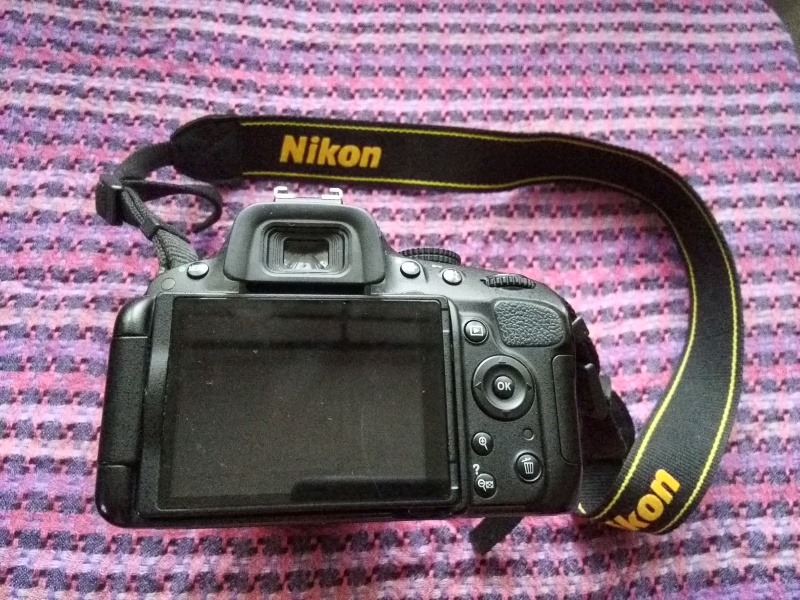
Physical size of the Nikon D3100 Body Compared to a Credit Card and an AA Battery
Now let’s compare Nikon D3100 size with the camera that it replaced: Nikon D3000. Nikon D3100 is 2mm narrower and 1mm shorter than Nikon D3000 but it is also 11mm thicker.
Comparison image of Nikon D3100 and Nikon D3000 Size, Weight and External Dimensions — Front View
Below you can find the comparison of the weight and thickness of Nikon D3100 with its main competitors:
Nikon D3100 Size Compared to Main Competitors
Weather Sealing
Nikon D3100 doesn’t have any environmental sealings on its body so you got to be extra careful to protect it against water and dust. If you shoot under these conditions very often, consider checking Top DSLR Cameras with Weather Sealing page.
Nikon D3100 Lens Mount and Lenses
Nikon D3100 has a Nikon F lens mount and currently there are 316 native lenses available for this mount. Besides providing one of the largest selection of lenses, Nikon F mount also has backward compatibility which means that you can use F mount lenses even dating from 1960s. It is also well supported by the lenses form third-party manufacturers.
It is also well supported by the lenses form third-party manufacturers.
A small disadvantage is that Nikon D3100 doesn’t have an internal focus motor so it will not auto focus with old-style screw-drive autofocus (AF) lenses. It still works well with modern Nikon AF-S, AF-I and G lenses but lenses form 1980s may not autofocus on Nikon D3100.
Nikon D3100 doesn’t have a sensor based image stabilization system but 107 of these lenses already comes with Optical Image Stabilization.
Weather Sealed Lenses for Nikon D3100
There are 83 lenses with weather sealing for Nikon D3100 but bear in mind that D3100 body doesn’t have weather sealings.
Here are some of the most popular Nikon D3100 Lenses on Camera Decision:
Popular Nikon F Mount Lenses for Nikon D3100
Check our Nikon D3100 Lenses page for more detailed lens search.
Nikon D3100 Sensor and Photography Features
Nikon D3100 has a 14.0MP APS-C (23. 1 x 15.4 mm ) sized CMOS sensor and features Expeed 2 processor. You can shoot at maximum resolution of 4608 x 3072 pixels with aspect ratios of and 3:2. D3100 has a native ISO range of 100 — 3200 which can be boosted to 12800 and it can save files in RAW format which gives you a wider room for post processing.
1 x 15.4 mm ) sized CMOS sensor and features Expeed 2 processor. You can shoot at maximum resolution of 4608 x 3072 pixels with aspect ratios of and 3:2. D3100 has a native ISO range of 100 — 3200 which can be boosted to 12800 and it can save files in RAW format which gives you a wider room for post processing.
Nikon D3100 is not the highest resolution APS-C camera. Fujifilm X-h3 with its 40.2MP sensor is leading in this class. Check the comparison of Nikon D3100 vs Fujifilm X-h3 or take a look at Highest resolution DSLR cameras list.
Nikon D3100 DxOMark Sensor Scores
DxOMark is a benchmark that scientifically assesses image quality of camera sensors. Nikon D3100 sensor has been tested by DxO Mark and got an overall score of 67 for its image quality. You can find the details of their analysis of Nikon D3100 here.
Let’s look at how the size of the Nikon D3100’s APS-C sensor compares with other standard sensor sizes.
Comparison image of Nikon D3100 Sensor Size with other standard sensorsNikon D3100 LCD and Viewfinder
Nikon D3100 has a Fixed Type 3.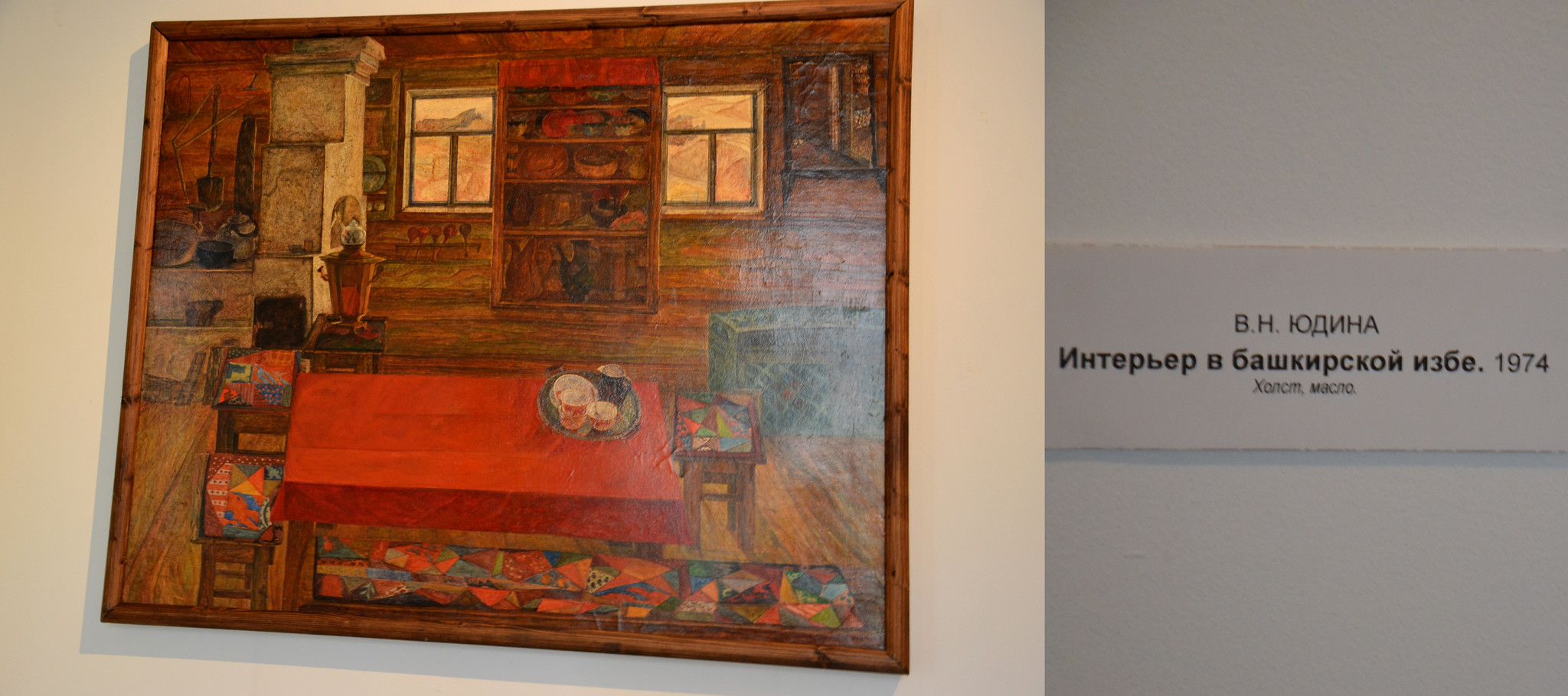 00-inch LCD screen with a resolution of 230k dots. Both the screen size and the screen resolution is up to the standards of this class.
00-inch LCD screen with a resolution of 230k dots. Both the screen size and the screen resolution is up to the standards of this class.
Unfortunately Nikon D3100 doesn’t have a Selfie friendly screen. If this feature is important for your shooting style, check here the list of Best DSLR Cameras with Selfie Friendly LCD screen.
D3100 has a built-in Optical (pentamirror) viewfinder, making it easier to shoot in direct sunlight and in other situations where it might be difficult to view the LCD monitor. The viewfinder has a coverage of 95% and a magnification ratio of 0.53x. 95% coverage means that what you see in your viewfinder while shooting will slightly be different from the actual image.
Nikon D3100 Connectivity, Storage and Battery
You can connect D3100 to compatible devices via its HDMI port or USB 2.0 (480 Mbit/sec) port.
Nikon D3100 Battery
Nikon D3100 is powered by EN-EL14 battery which provides a battery life of 550 shots according to CIPA standards. Considering that the average battery life of DSLR type cameras is 948 shots, Nikon D3100 has a short battery life for its class so we strongly recommend D3100 owners to invest in some extra batteries.
Considering that the average battery life of DSLR type cameras is 948 shots, Nikon D3100 has a short battery life for its class so we strongly recommend D3100 owners to invest in some extra batteries.
Battery Life Comparison in Entry-Level DSLR Cameras
Nikon D3100
Average
Pentax K-x with its 1900shots is the model with longest battery life among Entry-Level DSLR cameras. Check the comparison of Nikon D3100 vs Pentax K-x or take a look at Longest Battery Life DSLR cameras list.
Nikon D3100 Features Compared to Main Competitors
Nikon D3100 Video Features
With Nikon D3100, you can record your videos at a highest resolution of 1920 x 1080 at 24 fps and save in and MPEG-4 formats. Full HD resolution of Nikon D3100 will be adequate in most of the situations. But if you are after the highest resolution videos available, see our list of Top Cameras with 4K (Ultra-HD) Video.
D3100 has a built-in Mono microphone and a None speaker. On the other hand, Nikon D3100 doesn’t have any connections for external microphones and headphones.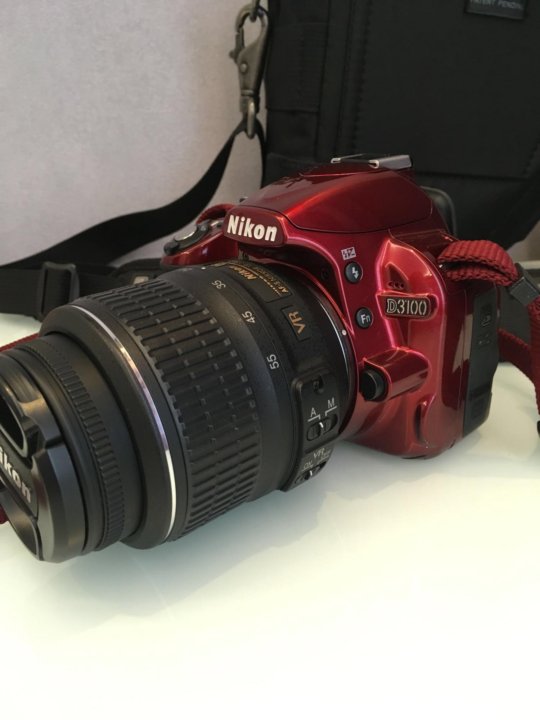 If you need a DSLR camera with external microphone connectivity, consider or in a similar price range.
If you need a DSLR camera with external microphone connectivity, consider or in a similar price range.
Also read:
- Best DSLR Cameras with Microphone Port
- Best DSLR Cameras with Headphone Port
Nikon D3100 Other Features
Max Shutter speed
Nikon D3100 can shoot continuously at max speed of 3 fps and has max shutter speed of 1/4000 sec.
Flash
D3100 has a built-in flash, and it also has a flash shoe to mount your external flashes too.
Built-in Flash of Nikon D3100
Focusing
Nikon D3100 features both Contrast Detection and Phase Detection autofocus (AF) systems which ensures speed and accuracy of focusing in most situations. The AF system has 11 focus points and 1 of these sensors are of Cross-type. Cross-type sensors locks focus faster and more accurate compared to single type sensors. Nikon D3100 also features Face detection AF where it intelligently detects the faces in the frame and locks the focus automatically.
Nikon D3100 also features Face detection AF where it intelligently detects the faces in the frame and locks the focus automatically.
User Manual
You can download Nikon D3100’s User Manual here
What type of Photography is Nikon D3100 Good for?
In this section, we review and score Nikon D3100 in 5 different photography areas.
Nikon D3100 for Portrait Photography
Nikon D3100 has a score of 54 for Portrait Photography which makes it an AVERAGE candidate for this type of photography. If Portrait is important for you, we recommend you to check our Top DSLR Cameras for Portrait Photography list.
Large APS-C (23.1 x 15.4 mm) sensor
Optical Built-in Viewfinder
Good Ergonomics&Handling
Average Resolution Sensor: 14.0MP
No Image Stabilization
Read the details of how we scored Nikon D3100 for Portrait Photography
Nikon D3100 for Street Photography
Nikon D3100 has a score of 58 for Street Photography which makes it an AVERAGE candidate for this type of photography.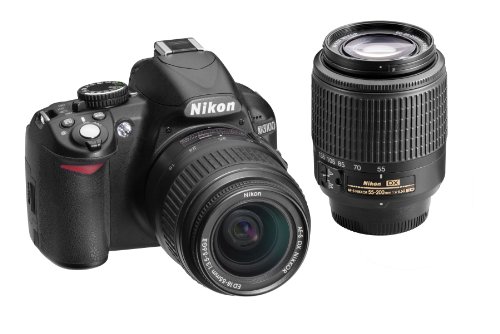 If Street is important for you, we recommend you to check our Top DSLR Cameras for Street Photography list.
If Street is important for you, we recommend you to check our Top DSLR Cameras for Street Photography list.
Optical Built-in Viewfinder
Live-view
Face-Detection Focusing
Large APS-C (23.1 x 15.4 mm) sensor
No Image Stabilization
Large Body
Read the details of how we scored Nikon D3100 for Street Photography
Nikon D3100 for Sports Photography
Nikon D3100 has a score of 71 for Sports Photography which makes it a GOOD candidate for this type of photography. If you are looking for a camera that is better suited to Sports Photography, we recommend you to check our Top 10 DSLR Cameras for Sports Photography list.
Fast Max shutter speed: 1/4000s
1 Cross Type Focus sensors
11 Focus Points
Good Battery Life: 550 shots
Good Ergonomics&Handling
Optical Built-in Viewfinder
Slow Continuous Shooting: 3.0fps
Environmental Sealings
No Image Stabilization
Read the details of how we scored Nikon D3100 for Sports Photography
Nikon D3100 for Daily Photography
Nikon D3100 has a score of 50 for Daily Photography which makes it an AVERAGE candidate for this type of photography. If Daily is important for you, we recommend you to check our Top DSLR Cameras for Daily Photography list.
If Daily is important for you, we recommend you to check our Top DSLR Cameras for Daily Photography list.
Large APS-C (23.1 x 15.4 mm) sensor
Large Body
505g
Body Thickness 75mm
Read the details of how we scored Nikon D3100 for Daily Photography
Nikon D3100 for Landscape Photography
Nikon D3100 has a score of 39 for Landscape Photography which makes it a POOR candidate for this type of photography. If Landscape We strongly recommend you to check our Top DSLR Cameras for Landscape Photography list and consider these alternatives over theD3100.
Live-view
Large APS-C (23.1 x 15.4 mm) sensor
Average Resolution Sensor: 14.0MP
No Environmental Sealings
Read the details of how we scored Nikon D3100 for Landscape Photography
Nikon D3100 Alternatives
In this section, we analyse how Nikon D3100 compares with other DSLR cameras within a similar price range.
Read a more detailed analysis of Nikon D3100 alternatives.
Popular Comparisons of Nikon D3100
Here is the eight most popular comparisons of Nikon D3100 amongst Camera Decision readers.
Nikon D3100 Alternatives in Mirrorless Cameras
It would also be interesting to compare Nikon D3100 with Mirrorless Cameras. Below we have listed 4 highest ranked Mirrorless cameras in Nikon D3100’s price range.
Nikon D3100 Conclusion and Scores
Currently, Nikon D3100 has an Overall Score of 55/100 which is based on our evaluation of 69 different technical parameters. Our scores are dynamically updated whenever a new camera is added to our database or when we change our ranking algorithm and the maximum score is always 100. Nikon D3100 is ranked #123 out of 208 in DSLR cameras (Top 20 DSLR), and ranked #399 out of 1247 in all Cameras (Top 20 Overall).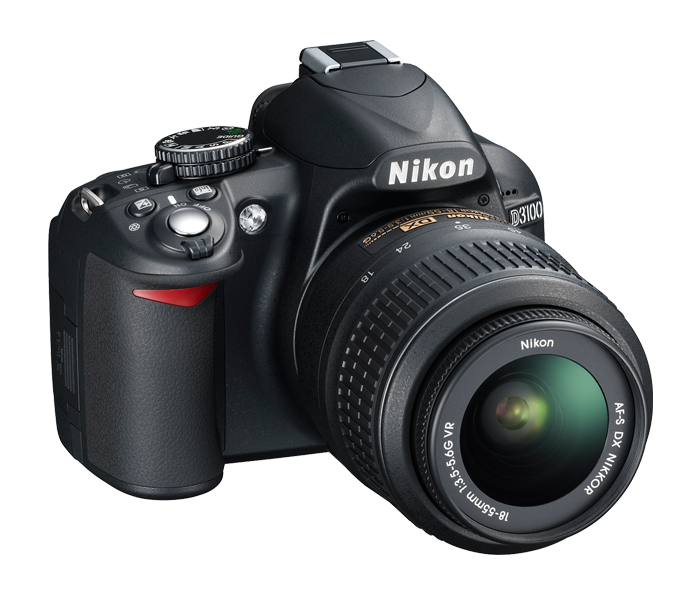
#399 out of 1247 in Top Ranking Cameras
#123 out of 208 in Top Ranking DSLR Cameras
#55 out of 81 in Top Ranking Entry-Level DSLR Cameras
#174 out of 266 in Top Ranking APS-C Sensor Cameras
#36 out of 60 in Top Ranking Nikon F Lens Mount Cameras
#302 out of 370 in Largest Viewfinder Magnification Cameras (0.53x)
#22 out of 142 in Lightest DSLR Cameras with APS-C sensor(505g)
#145 out of 918 in Top Ranking Cameras with Fixed Type Screen
Main Scores
Imaging
Features
Value for Money
Portability
Overall Score
Check our Smart Finder Tool to filter, sort and compare all digital cameras.
Frequently Asked Questions about Nikon D3100
Nikon D3100 Detailed Specifications
| General | |
|---|---|
| Brand | Nikon |
| Model | Nikon D3100 |
| Announced | 2010-12-21 |
| Body Type | Compact SLR | Lens |
| Manual Focus | |
| Lens Mount | Nikon F |
| Number of Lenses | 316 |
| Focal Length Multiplier | 1.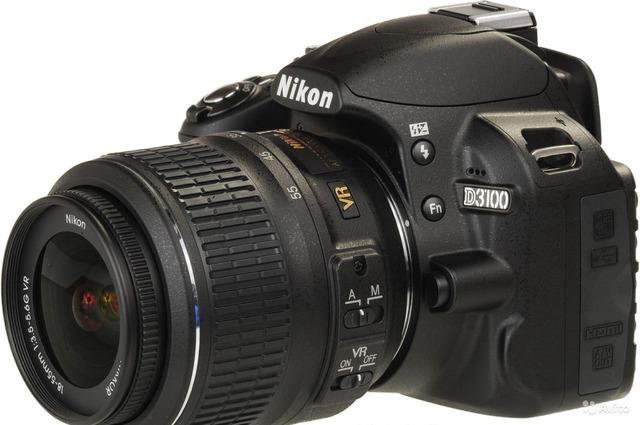 5× 5× |
| Macro Focus Range | n/a | Screen |
| Screen Type | Fixed Type |
| Screen Technology | TFT LCD monitor |
| Screen Size | 3.00″ |
| Screen Resolution | 230k dots |
| Live View | |
| Touch Screen | Viewfinder |
| Viewfinder | Optical (pentamirror) |
| Viewfinder Resolution | no electronic viewfinder |
| Viewfinder Coverage | 95% |
| Viewfinder Magnification | 0.53x | Photography Features |
| Min Shutter Speed | 30s |
| Max Mechanical Shutter Speed | 1/4000s |
| Continuous Shooting | 3. 0 fps 0 fps |
| Shutter Priority | |
| Aperture Priority | |
| Manual Exposure Mode | |
| Exposure Compensation | Yes |
| Custom White Balance | |
| Image Stabilization | |
| Built-in Flash | |
| Flash Range | 12.00 m (at ISO 100) |
| Max Flash Sync | 1/200s |
| Flash Modes | Auto, Red-Eye, Slow, Red-Eye Slow, Rear curtain |
| External Flash | |
| AE Bracketing | |
| WB Bracketing | Exposure Modes |
| Multi-Segment | |
| Average | |
| Spot | |
| Partial | |
| AF-Area | |
| Center Weighted | DxO Sensor Scores |
| DxO Overall Score | 67 |
| DxO Color Depth | 22. 5 5 |
| DxO Dynamic Range | 11.3 |
| DxO Low Light ISO | 919 |
| Report a correction |
| Sensor | |
|---|---|
| Sensor Type | CMOS |
| Sensor Size | APS-C |
| Sensor Dimensions | 23.1 x 15.4 mm |
| Sensor Area | 355.74mm2 |
| Sensor Resolution | 14 megapixels |
| Max Image Resolution | 4608 x 3072 |
| Max Native ISO | 3,200 |
| Max Boosted ISO | 12800 |
| Min Native ISO | 100 |
| RAW Support | Autofocus |
| AF Touch | |
| AF Continuous | |
| AF Single | |
| AF Tracking | |
| AF Selective | |
| AF Center | |
| AF Multi Area | |
| AF Live View | |
| AF Face Detection | |
| AF Contrast Detection | |
| AF Phase Detection | |
| Number of Focus Points | 11 |
| Number of Cross Focus Points | 1 | Video Features |
| Video Resolutions | 1920 x 1080 (24 fps), 1280 x 720 (30, 25, 24 fps), 640 x 424 (24 fps) |
| Max Video Resolution | 1920 x 1080 |
| Video Formats | MPEG-4 |
| Microphone Port | |
| Headphone Port | Connectivity |
| Wireless Connectivity | Eye-Fi Connected |
| HDMI | |
| USB | USB 2. 0 (480 Mbit/sec) 0 (480 Mbit/sec) | Physical |
| Environmental Sealing | |
| Water Proof | |
| Dust Proof | |
| Shock Proof | |
| Crush Proof | |
| Freeze Proof | |
| Weight | 505g |
| Physical Dimensions | 124 x 96 x 75mm |
| Battery Life | 550 shots |
| Battery Type | Battery Pack |
| Battery Model | EN-EL14 | Other Features |
| Self Timer | Yes |
| Timelapse Recording | |
| GPS | Optional |
| Storage Type | SD/SDHC/SDXC |
| Storage Slots | 1 |
FOLLOW US
Most Popular Entry-Level DSLR Cameras
Nikon D5600
24 MP | APS-C Sensor| Nikon F Mount
Nikon D3500
24 MP | APS-C Sensor| Nikon F Mount
Canon SL3
24 MP | APS-C Sensor| Canon EF/EF-S Mount
Nikon D5500
24 MP | APS-C Sensor| Nikon F Mount
Canon 700D
18 MP | APS-C Sensor| Canon EF/EF-S Mount
Canon 600D
18 MP | APS-C Sensor| Canon EF/EF-S Mount
Nikon D5300
24 MP | APS-C Sensor| Nikon F Mount
Pentax K-S2
20 MP | APS-C Sensor| Pentax KAF2 Mount
Latest DSLR Cameras
Canon T8i
24 MP | APS-C Sensor | Canon EF/EF-S Mount
Nikon D6
21 MP | Full frame Sensor | Nikon F Mount
Canon 1D X III
20 MP | Full frame Sensor | Canon EF Mount
Nikon D780
25 MP | Full frame Sensor | Nikon F Mount
Canon 90D
33 MP | APS-C Sensor | Canon EF/EF-S Mount
Canon SL3
24 MP | APS-C Sensor | Canon EF/EF-S Mount
Nikon D3500
24 MP | APS-C Sensor | Nikon F Mount
Nikon D3100 Memory Card Recommendations
Looking for SD cards that work well in the Nikon D3100 DSLR? Here are some practical recommendations to try to make sense of the confusing world of SD cards.
The Nikon D3100 is an entry-level camera in Nikon’s DSLR lineup. It has a cropped APS-C sensor in Nikon’s DX range.
It’s several generations back now, and by the standards of the newer models, it’s not especially demanding of the memory card. That makes it easy to find an SD card that will work well in the D3100.
But buying SD cards can be confusing. There’s a bunch of different specs and jargon and even types. And there’s no point overpaying for a card that’s fancier than you need. So here are some practical recommendations on which SD cards to get for the Nikon D3100 DSLR so you can get out shooting.
Nikon D3100 Memory Card – Quick Recommendations
Here are some quick recommendations for good memory cards for the Nikon D3100. These offer a good mix of speed, reliability, cost-effectiveness, and broad availability. Any of these makes for a good choice for the D3100.
- SanDisk Ultra
- Lexar Professional 633x
- Kingston Canvas Select Plus
SanDisk Ultra U1 UHS-I
- Fast for better pictures and Full HD video(2) | (2)Full HD (1920×1080) video support may vary based upon.
 ..
.. - Great choice for compact to mid-range point-and-shoot cameras
Lexar Professional 633x V30 UHS-I
- High-speed, Class 10 performance leverages UHS-I (U1 or U3 depends on capacity) technology for a read…
- Capture high quality images of stunning 1080p full-HD, 3D, and 4K video
Kingston Canvas Select Plus V30 UHS-I
- Faster speeds — Class 10 UHS-I speeds up to 100MB/s.
- Capture in full HD & 4K UHD video (1080P) — the advanced UHS-I interface makes the card ideal for…
Nikon D3100 Memory Card Requirements
Nikon issues its own guidelines for officially approved memory cards for the Nikon D3100, but it’s pretty hard to make sense of. They’re buried on page 177 in the technical notes section of the Nikon D3100 instruction manual. They look like this.
There’s then a note: “Other cards have not been tested. For more details on the above cards, please contact the manufacturer. ”
”
I don’t find that especially helpful. So I’ve taken those official recommendations from Nikon and translated them into practical recommendations below that cut through all the confusing jargon that memory card manufacturers use in their marketing.
In general, the Nikon D3100 will accept SD, SDHC, and SDXC cards. All of those types look exactly the same–the difference is in the amount of memory. SD refers to cards up to 2GB in size. Now that memory card prices have come down and you can buy very good 32GB cards for $15, there’s no good reason to be buying a 2GB card if your camera supports larger ones. So I’d recommend sticking with SDHC or SDXC for the Nikon D3100. SDHC refers to cards that are 4GB up through 32GB. SDXC refers to cards that are 64GB or above.
If you’re doing video recording, you’ll need a card that’s designated as class 6 or higher. The reason is that when recording video the camera needs to write a lot of data to the card quickly. If your card isn’t able to write data fast enough, the video recording will stop. The current crop of memory cards are all class 10, so you’re better off going with one of them than searching around for an old class 6 card.
The current crop of memory cards are all class 10, so you’re better off going with one of them than searching around for an old class 6 card.
So here’s a mix of recommended memory cards that will work well in the Nikon D3100 and that are reasonably priced, readily available, and good value. This list isn’t exhaustive, and there are both faster and slower SD cards that will also work, as well as smaller and larger ones. Because of the similarities between the two cameras, these are essentially the same memory card recommendations for the Nikon D5300 as well.
Recommended Memory Cards for the Nikon D3100 – In Detail
These aren’t necessarily the fastest SD cards on the market, but they’re fast enough for this camera. It’s also not designed to be a comprehensive list of every SD card that will work.
My emphasis here is on cards that meet these criteria: fast enough for all the features of this camera; from a reputable and reliable brand; readily available at retailers; and good value for money. If you want to use a faster, fancier card you can, but you won’t see any extra benefit in doing so while you’re operating the camera (but you might see some faster speeds when downloading the photos to a computer, depending on your computer and memory card reader combination).
If you want to use a faster, fancier card you can, but you won’t see any extra benefit in doing so while you’re operating the camera (but you might see some faster speeds when downloading the photos to a computer, depending on your computer and memory card reader combination).
SanDisk Ultra U1 UHS-I
SanDisk Ultra U1 UHS-I
- Fast for better pictures and Full HD video(2) | (2)Full HD (1920×1080) video support may vary based upon…
- Great choice for compact to mid-range point-and-shoot cameras
The SanDisk Ultra line is their cost-effective mid-range option. The latest versions of the Ultra cards are much faster than older versions, and it’s a good basic option for cameras that don’t demand too much of their SD card. The next level up—the Extreme cards—are also a good option, but the Ultra cards are often priced slightly lower. They’re usually very easy to find in stores, too.
SanDisk recycles its model names, and you can still find older, slower versions. This latest version of the Ultra card is rated for U1 for video recording and uses a UHS-I interface.
This latest version of the Ultra card is rated for U1 for video recording and uses a UHS-I interface.
It comes in sizes ranging from 32GB through 256GB.
Buy at: Amazon
Lexar 633x V30 UHS-I
Lexar 633x V30 UHS-I
- High-speed, Class 10 performance leverages UHS-I (U1 or U3 depends on capacity) technology for a read…
- Capture high quality images of stunning 1080p full-HD, 3D, and 4K video
The Lexar 633x range has been one of the mainstays of Lexar’s SD cards for a while now. There are now faster cards available, but this one is again fast enough for this camera while also representing good value for money.
One distinctive thing about this range is that they’re available from 32GB up through `TB.
Buy at: Amazon.
Kingston Canvas Select Plus V30 UHS-I
Kingston Canvas Select Plus V30 UHS-I
- Faster speeds — Class 10 UHS-I speeds up to 100MB/s.

- Capture in full HD & 4K UHD video (1080P) — the advanced UHS-I interface makes the card ideal for…
Kingston is a brand that isn’t as well known as some of the others, but they’ve been making reliable memory cards for a very long time. As a brand, they don’t tend to focus on the cutting edge speeds but rather on reliable and good-value memory cards.
This particular card (model SDS2 Canvas Select Plus) isn’t the fastest in Kingston’s range, but it’s fast enough to work well in this camera. It’s available in sizes from 16GB through 128GB.
Buy at: B&H Photo or Amazon.
PNY Elite-X V30 UHS-I
PNY Elite-X V30 UHS-I
- Class 10 U3 V30 speed rating with read speeds up to 100MB/s
- Class 10 U3 V30 rating delivers speed and performance for burst mode HD photography and 4K Ultra HD…
PNY is another brand that isn’t as well known as some others, but they’ve been around a long time and make very good memory cards that are usually very competitively priced and good value.
This particular model is available in sizes ranging from 64GB to 512GB.
Buy at: Amazon
Delkin Devices Advantage V30 UHS-I
Delkin Devices Advantage V30 UHS-I
- Supports 4K & Full HD 1080p Video Recording at High Frame Rates
- RAW Continuous-Shooting Approved
Delkin Devices have been around for a long time but have been relatively quiet in recent years. But they’ve refreshed their entire lineup of cards recently to simplify the range and bring the cards up to current specs.
The Advantage card is rated to V30 and has a UHS-I interface. It currently comes in sizes up to 512GB.
Buy at: B&H Photo or Amazon.
Other Brands
There are also a lot of smaller, mostly unknown brands. In general, I’d recommend sticking to a brand you know and trust or one of the brands I’ve mentioned on this page because they have well-established reputations for putting out high-quality cards. Some of the other lesser-known brands might work, but they also might not be all they claim to be. The ones above should give a good selection of ones you can find fairly easily at retailers near you.
Some of the other lesser-known brands might work, but they also might not be all they claim to be. The ones above should give a good selection of ones you can find fairly easily at retailers near you.
Faster SD Cards
If you’re looking to use a faster card, take a look at the ones that I’ve subjected to my independent SD card speed tests.
Images and product information from Amazon PA-API were last updated on 2022-09-13 at 00:30. Product prices and availability are accurate as of the date/time indicated and are subject to change. Any price and availability information displayed on Amazon Site at the time of purchase will apply to the purchase of this product.
by David Coleman
I’m a professional freelance travel photographer based in Washington DC. Seven continents, up mountains, underwater, and a bunch of places in between. My images have appeared in numerous publications, and you can check out some of my travel photography here. More »
More »
Repairing Nikon D3100 Autofocus — iFixit Repair Guide
Skip to main content- BackNikon D3100
- Edit
- Full Screen
- Options
- History
- Download PDF
- Translate
- Embed This Guide
Written By: Lasse Lorenzen (and 4 other contributors)
- Favorites: 12
- Completions: 25
Difficulty
Moderate
Steps
2
Time Required
15 minutes
Sections
1
- Repairing Nikon D3100 Autofocus 2 steps
Flags
1
- BackNikon D3100
- Full Screen
- Options
- History
- Download PDF
- Edit
- Translate
- Embed This Guide
Introduction
I had a problem with my autofocus, and i could not find the answer. Therefore i investigated further and found out what to do. This i have wrote in this guide.
Therefore i investigated further and found out what to do. This i have wrote in this guide.
Compressed Air
You can also use a dry plastic bottle to blow air.
Available for sale on Amazon
Buy
No parts specified.
The problem is that the autofocus can not adjust correctly. There can be more than one solution.
1. Try forcing the lens to rotate a fraction of a inch. This will sometimes help the problem. Or simply move the switch from M to A on the lens.
org/HowToDirection»>
2. Try to switching to a single of the 11 auto focus points. Then try if there are specific points that are the problem.
This is done by selecting in the menu of your camera to the points. Then focusing on a single object with a background far away. Try focusing on the object then on the background. If this is possible the autofocus point is fine.
3. If all auto focus points are fine, try updating the firmware or cleaning the sensors inside the camera behind the mirror. If a one or more points are out of order, also try cleaning the sensors behind the mirror.
org/HowToDirection»>5. Set the camera selection wheel to manual (M), see picture
6. Turn the camera on, and start the liveView format. This will flip op the mirror inside the camera.
Take a dry can blower.
 Or if in lack, use an empty plastic bottle, without moisture inside, and use it to blow on the autofocus sensors.
Or if in lack, use an empty plastic bottle, without moisture inside, and use it to blow on the autofocus sensors.They are located at the bottom under the mirror. NOTE Do not blow with your mouth, small amount of moisture will hit the CCD also located here.
Turn the camera off
Reattach the lens. Push the lens, white point to white point and turn the lens in place.
This worked for me, hope it also helped you 😉
Edit
4. Detatch the lens from the camera, by applying pressure on the release button and twisting the lens so it can be released. See picture
Edit
Almost done!
Hope you could use this information
Conclusion
Hope you could use this information
Cancel: I did not complete this guide.
25 other people completed this guide.
Author
with 4 other contributors
Badges: 12
+9 more badges
View Statistics:
Past 24 Hours: 10
Past 7 Days: 54
Past 30 Days: 311
All Time: 71,499
Nikon D3100 vs Nikon D5100: What is the difference?
45points
Nikon D3100
54points
Nikon D5100
+ Nikkor AF-S DX 18-55mm f/3. 5-5.6G VR
5-5.6G VR
+ Nikkor AF-S DX 18-55mm f/3.5-5.6G VR
Comparison winner
vs
133 facts in comparison
Nikon D3100
Nikon D5100
Why is Nikon D3100 better than Nikon D5100?
- 55g lighter?
455gvs510g - 8.75% less body volume?
880.1cm³vs964.51cm³ - 0.1s less startup delay?
0.4svs0.5s - 5.04mm thinner?
73.66mmvs78.7mm
Why is Nikon D5100 better than Nikon D3100?
- 14.19% more megapixels (main camera)?
16.9MPvs14.8MP - Has a flip-out screen?
- 110shots longer battery life?
660shotsvs550shots - 25% better video recording quality (main camera)?
1080 x 30fpsvs1080 x 24fps - 33.33% faster shooting at highest resolution with AF as JPEG format?
4fpsvs3fps - 28.73% lower noise at high ISO?
1183 ISOvs919 ISO - 13 better image quality?
80vs67 - Has a microphone input?
Which are the most popular comparisons?
Nikon D3100
vs
Canon EOS 1100D
Nikon D5100
vs
Nikon D3200
Nikon D3100
vs
Nikon D3200
Nikon D5100
vs
Nikon D5200
Nikon D3100
vs
Nikon D5000
Nikon D5100
vs
Canon EOS 600D
Nikon D3100
vs
Nikon D3000
Nikon D5100
vs
Canon EOS 650D
Nikon D3100
vs
Canon EOS 600D
Nikon D5100
vs
Nikon D3300
Nikon D3100
vs
Nikon D60
Nikon D5100
vs
Nikon D5000
Nikon D3100
vs
Canon EOS 500D
Nikon D5100
vs
Nikon D3500
Nikon D3100
vs
Canon EOS 550D
Nikon D5100
vs
Nikon D7000
Nikon D3100
vs
Nikon D90
Nikon D5100
vs
Nikon D90
Price comparison
Cheap alternatives
User reviews
Overall Rating
Nikon D3100
0 User reviews
Nikon D3100
0. 0/10
0/10
0 User reviews
Nikon D5100
3 User reviews
Nikon D5100
8.3/10
3 User reviews
Features
Build quality
No reviews yet
9.0/10
3 votes
Video quality
No reviews yet
8.0/10
3 votes
Controls
No reviews yet
8.3/10
3 votes
Low-light performance
No reviews yet
7.3/10
3 votes
Autofocus
No reviews yet
7.0/10
3 votes
Optics
1.sensor size
One of the most important aspects of a camera is the size of its sensor. A larger sensor will capture more light, which results in improved low-light performance, dynamic range, and general image quality.
2.focus points
The more focus points the more flexibility in picking which part of the scene to focus on. They also give the image sensor a better probability in identifying the right area of the scene to focus on in more automatic modes.
3.megapixels (main camera)
14.8MP
16.9MP
The number of megapixels determines the resolution of the images captured with the main camera. A higher megapixel count means that the camera is capable of capturing more details. However, the megapixel count is not the only important element determining the quality of an image.
4.maximum light sensitivity
Unknown. Help us by suggesting a value. (Nikon D3100)
Unknown. Help us by suggesting a value. (Nikon D5100)
With a higher light sensitivity (ISO level), the sensor absorbs more light. This can be used to capture moving objects using a fast shutter speed, or to take images in low light without using a flash.
5.has sensor shift stabilization
✖Nikon D3100
✖Nikon D5100
With sensor shift, the image sensor (rather than the lens) moves to counterbalance any vibration of the camera. This means the image will be stabilised regardless of what lens is being used.
6.continuous shooting at high resolution
Fast continuous shooting is useful for catching action shots.
7.has AF tracking
✔Nikon D3100
✔Nikon D5100
With AF tracking, once you choose the subject and press the shutter release part way down, as the subject moves, the autofocus will follow it. No more out of focus shots.
8.Has phase-detection autofocus for photos
✔Nikon D3100
✔Nikon D5100
Phase-detection autofocus is much faster than a contrast detection autofocus, allowing for sharper images.
9.fastest shutter speed
1/4000s
1/4000s
A faster maximum shutter speed allows taking pictures of fast moving subjects without blur.
Videography
1.video recording (main camera)
1080 x 24fps
1080 x 30fps
The maximum resolution available for videos shot with the main camera. Although it may be possible to choose among other frame rates, those recordings usually have lower resolutions.
Although it may be possible to choose among other frame rates, those recordings usually have lower resolutions.
2.Has phase-detection autofocus for videos
✔Nikon D3100
✔Nikon D5100
A phase-detection autofocus system is faster than a contrast detection autofocus system. Even when recording scenes with a lot of fast movements, the videos are sharp and clear.
3.has continuous autofocus when recording movies
✔Nikon D3100
✔Nikon D5100
When recording movies they stay focussed and sharp.
4.has a microphone input
✖Nikon D3100
✔Nikon D5100
A microphone port allows connecting external high-end or specialized microphones.
5.has a socket for a 3.5 mm audio jack
✖Nikon D3100
✖Nikon D5100
With a standard mini jack socket, you can use the device with most headphones.
6.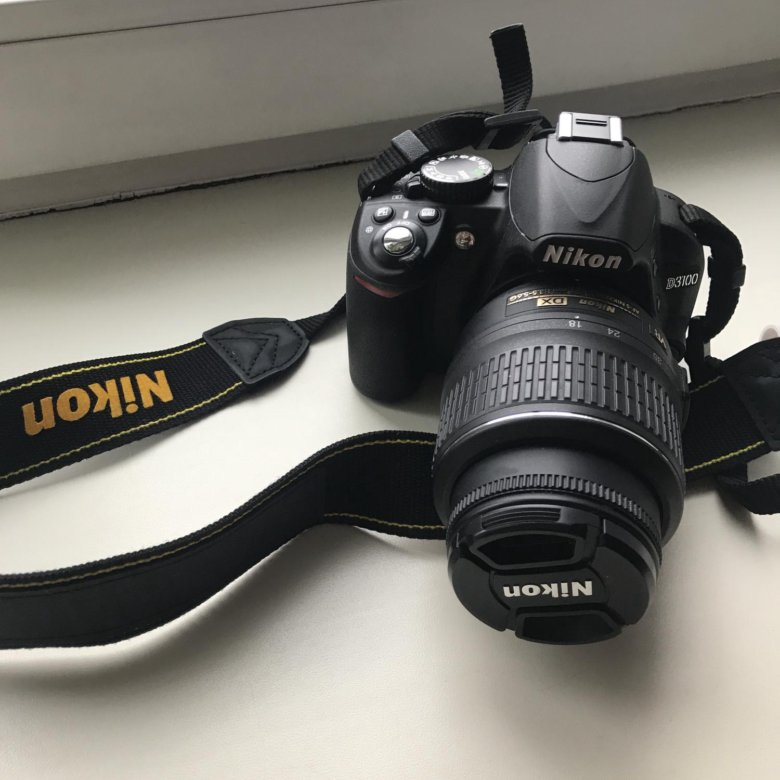 has a stereo microphone
has a stereo microphone
✖Nikon D3100
✖Nikon D5100
A stereo microphone allows to record audio files or movies in stereo without an external microphone.
7.Has timelapse function
✖Nikon D3100
✔Nikon D5100
A timelapse shows a long passage of time sped up. A series of photographs taken from the same position over a long period is joined together to create a short video. It is great way to capture things like the setting sun, or clouds moving across the sky.
8.movie bitrate
Unknown. Help us by suggesting a value. (Nikon D3100)
Unknown. Help us by suggesting a value. (Nikon D5100)
The higher the movie recording bitrate the better the movie quality with more and crispier details and less compression artifacts.
9.number of microphones
More microphones result in better sound quality and enable the device to filter out background noise.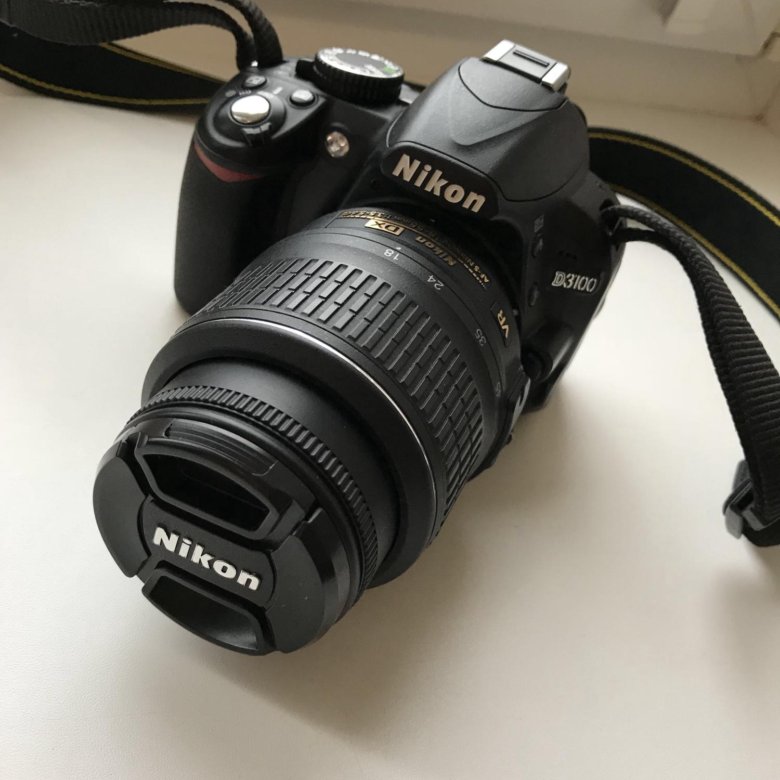
Battery
1.Battery life (CIPA)
550shots
660shots
CIPA is an independent, standard measurement that determines how many shots a camera can take before the battery dies.
2.has a removable battery
✔Nikon D3100
✔Nikon D5100
The battery is removable and can be replaced by the user if broken.
3.has a rechargeable battery
✔Nikon D3100
✔Nikon D5100
The battery can be recharged and used over again.
4.has a battery level indicator
✔Nikon D3100
✔Nikon D5100
An indicator shows you when the device has low battery.
5.battery power
1000mAh
1030mAh
Battery power, or battery capacity, represents the amount of electrical energy that a battery can store. More battery power can be an indication of longer battery life.
Features
1. noise
noise
919 ISO
1183 ISO
The maximum ISO at which the device still captures excellent quality images. Source: DxOMark.
2.supports Wi-Fi
✖Nikon D3100
✖Nikon D5100
The device can connect to Wi-Fi.
3.image quality
A device’s overall image quality score considers: color depth, dynamic range and low light performance. Source: DxOMark.
4.color depth
22.5bits
23.5bits
The better a device’s color depth the more color nuances it can distinguish. Source: DxOMark.
5.dynamic range
11.3Evs
13.6Evs
The better the dynamic range the system captures a wider number of values from dark to light leading to more details in low and highlights. Source: DxOMark.
6.Has dual card slots
✖Nikon D3100
✖Nikon D5100
It has two memory card slots, allowing you to store more photos without switching cards. This is particularly useful on long shoots when you need more space.
This is particularly useful on long shoots when you need more space.
7.shoots raw
✔Nikon D3100
✔Nikon D5100
A raw image file contains minimally processed data from the image sensor. Raw files are so named because they are not yet processed and therefore are not ready to be printed or edited with a bitmap graphics editor.
8.supports Wi-Fi 5 (802.11ac)
✖Nikon D3100
✖Nikon D5100
802.11ac wireless works on the 5GHz frequency range. It offers higher transfer rates, improved reliability, and improved power consumption. It provides advantages for gaming and HD video streaming.
9.supports lossless compressed raw
✖Nikon D3100
✖Nikon D5100
It is capable of shooting stills in a lossless compressed raw format. This has all the advantages of shooting raw, while taking up much less storage space. The smaller file size also allows quicker read/write speeds.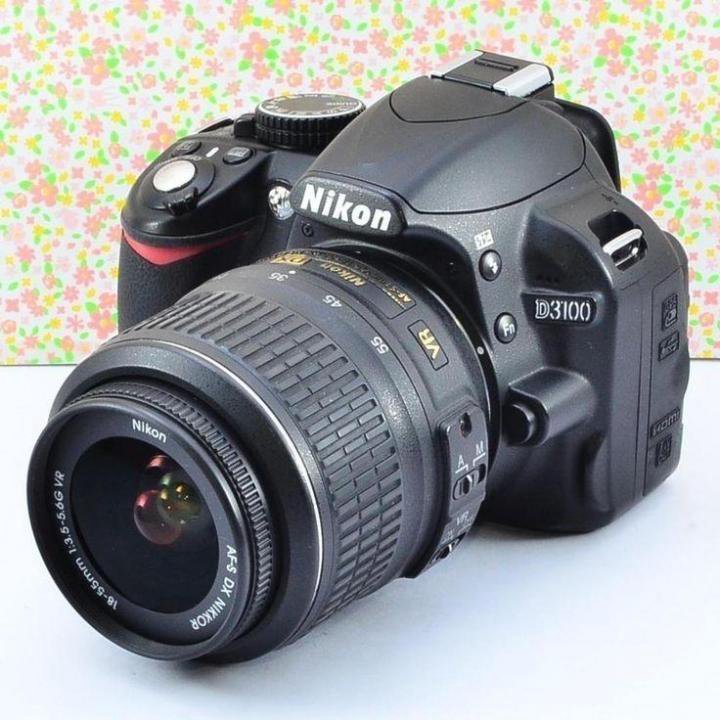
Miscellaneous
1.sensor size
Unknown. Help us by suggesting a value. (Nikon D3100)
23.6 x 15.6mm
The larger the sensor the more light the sensor captures yielding in better image quality.
Price comparison
CancelWhich are the best cameras?
Nikon D3100 — instructions
- Instructions
- Videos
Our library contains 1 user guide for D3100 Nikon
Nikon D3100 User Manual, 224 pages| Recognized languages: | Russian |
|---|---|
| Pages: | 224 |
| Size: | 18. 25 MB 25 MB |
- FAQ
- Contents
- Safety measures
- Notices
- Introduction
- General
- Getting to know the camera
- Camera body
- Mode dial
- Shooting mode switch
- Information screen
- Control dial
- Viewfinder
- Camera menu
- Using the camera menus
- Before you start
- Charge battery
- Insert battery
- Install lens
- Basic settings
- Inserting a memory card
- Formatting the memory card
- Viewfinder focus adjustment
- Taking and viewing pictures
- Point-and-Shoot Shooting (Auto and Auto (Flash Off) Modes)
- Step 1: Turn on the camera
- Step 2: Select Auto or Auto (flash off) mode
- Step 3: Frame
- Step 4: Focus
- Step 5: Remove
- Creative shooting (Scene modes)
- Portrait
- Landscape
- Child
- Sport
- Macro
- Night portrait
- View
- Erase unwanted pictures
- Point-and-Shoot Shooting (Auto and Auto (Flash Off) Modes)
- Help mode
- Help (Guide)
- Help mode menu
- Live View
- Image framing in monitor
- Recording and viewing videos
- Movie recording
- Viewing videos
- Movie editing
- Trimming videos
- Save selected frames
- Shooting mode
- Shooting mode selection
- Self-timer mode
- Learn more about photography (all modes)
- Focusing
- Focus mode
- AF area mode
- Focus point selection
- Focus lock
- Manual focus
- Image quality and size
- Image quality
- Image size
- Using the built-in flash
- Flash mode
- Sensitivity ISO
- Focusing
- P, S, A and M modes
- Shutter speed and aperture
- P Mode (Programmed Auto)
- Mode S (Auto with output priority)
- Mode A (Aperture Priority Auto)
- Mode M (Manual)
- Exposure
- Exposure meter
- Auto exposure lock
- Exposure compensation
- Flash compensation
- Active D-Lighting
- White balance
- White balance fine tuning
- Manual setting
- Picture Controls
- Select Picture Control
- Changing Picture Controls
- GPS device GP-1
- Shutter speed and aperture
- Learn more about viewing pictures
- Full-frame playback
- Image info
- View thumbnail images
- Calendar display
- Close-up View Zoom
- Protect pictures from deletion
- Deleting pictures
- Full-frame playback, thumbnail playback, calendar playback
- View menu
- Slide show
- Full-frame playback
- Connections
- Computer connection
- Before connecting the camera
- Camera connection
- Print pictures
- Printer connection
- Print pictures one by one
- Printing multiple pictures
- Create a sketch sheet
- Create DPOF print order: Print order
- Viewing pictures on a TV screen
- SD devices
- High definition devices
- Computer connection
- Information about menu options
- Playback menu: Image management
- View folder
- Display mode
- Image review
- Rotate vertical
- Shooting menu: Shooting options
- Reset shooting settings
- Sense settings.
 ISO
ISO - Aut. ex. distort mi
- Color space
- Noise suppression
- AF illuminator
- Built-in flash
- Setup menu: Camera setup
- Reset settings
- LCD brightness
- Info output format
- Aut. display inf.
- Video standard
- Flicker suppression
- Time zone and date
- Language
- Comment
- Aut. frame rotation
- Ref. for ud. dust
- Auto timers off
- Self-timer delay
- Signal
- Rangefinder
- Last numbering files
- Buttons
- Block. descent without map
- Date imprint
- Storage folder
- Eye-Fi download
- Firmware version
- Retouch menu: Create retouched copies
- Making retouched copies
- D-Lighting
- Correction “red. eye”
- Cropping
- Monochrome
- Filter effects
- Color balance
- Small picture
- Image overlay
- NEF (RAW) processing
- Fast processing
- Alignment
- Rect.
 distortion
distortion - Fisheye
- Color contour
- Admin. perspective
- Macro effect
- Visual comparison
- Recent settings
- Playback menu: Image management
- Technical notes
- Compatible lenses
- Compatible CPU lenses
- Compatible non-CPU lenses
- Additional flashes (Speedlight)
- Nikon Creative Lighting System (CLS)
- Other accessories
- Recommended memory cards
- Connecting the power connector and AC adapter
- Camera care
- Storage
- Cleaning
- Infrared filter
- Camera and battery care: Warnings
- Available settings
- Memory card capacity
- Troubleshooting
- Display
- Shooting (all modes)
- Shooting (P, S, A, M)
- View
- Other
- Error messages
- Specifications
- Battery life
- Index
- Compatible lenses
Popular brands
- Apple
- Bissell
- Brother
- Canon
- Casio
- Dell
- Garmin
- Honeywell
- HP
- LG Motorola
- Nikon
- Panasonic
- Pioneer Samsung
- Sharp
- SINGER
- Sony
- Whirlpool
- Yamaha
Popular Instructions
- Nikon — D5000
- Nikon — D40
- Nikon — D3100
- Nikon — D90
- Nikon — D7000
- Nikon — D80
- Nikon — D3000
- HP — Officejet Pro 8600
- Canon — EOS 60D
Nikon D3100 vs Nikon D5000: What is the difference?
Smartphone-graphic conductive headphones
45 ballla
Nikon D3100
49 Ballla
Nikon D5000
+ Nikkor AF-S DX 18-5. 6G VR
6G VR
+ 18-5-18 + 18-5-18 + 18-5-1YOM + 18-5-14000 + 18-6 + 18-6 + 18-6 + 18-6 + 18-6 + 18-6 + 18-6 + 18-6 + 18-ALS -S VR DX NIKKOR
Comparison Winner
vs
132 facts in comparison
Nikon D3100
Nikon D5000
Why is Nikon D3100 better than Nikon D5000?
- 20.33% more megapixels (main camera)?
14.8MP vs 12.3MP - 40shots longer battery life?
550shots vs 510shots - 1.5x better video recording quality (main camera)?
1080 x 24fps vs 720 x 24fps - 5.88% lower noise at high ISO?
919 ISO vs 868 ISO - 105g lighter?
455g vs 560g - Has 24p cinema mode?
- 0.07s less shutter lag?
0.28s vs 0.35s - 1 Later EXPEED?
2 vs 1
Why is Nikon D5000 better than Nikon D3100?
- Has a rotating screen?
- 33.
 33% faster high-resolution JPEG shooting with autofocus?
33% faster high-resolution JPEG shooting with autofocus?
4fps vs 3fps - 5 higher image quality?
72 vs 67 - 10.62% more dynamic range?
12.5Evs vs 11.3Evs - Does it have time lapse function?
- 8% more battery capacity?
1080mAh vs 1000mAh - Has GPS?
- 0.27s shorter start delay?
0.13s vs 0.4s
What are the most popular comparisons?
Nikon D3100
vs
Nikon D5100
Nikon D5000
vs
Canon EOS 2000D
Nikon D3100
vs
Canon EOS 1100D
Nikon D5000
vs
Nikon D5100
Nikon D3100
vs
Nikon D3200
Nikon D5000
vs
Nikon D32000009
Nikon D5000
vs
Nikon D3500
Nikon D3100
vs
Canon EOS 600D
Nikon D5000
vs
Canon EOS 600D
Nikon D3100
vs
Nikon D60
Nikon D5000
VS
Nikon D3300
Nikon D3100
VS
Canon EOS 500D
Nikon D5000
VS
Nikon D300
Nikon D3100 9000
9000 VS 9000 VS 9000 VS 9000 VS009
2.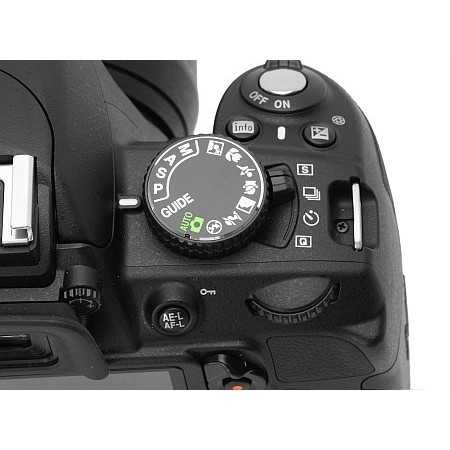 focus points
focus points
The more focus points, the more flexibility in choosing which part of the scene to focus on. They also give the sensor more power to determine the best part to focus on in more automatic modes.
3MP (main camera)
14.8MP
12.3MP
The number of megapixels determines the resolution of images captured by the main camera. A higher megapixel count means the camera is capable of capturing more detail. However, the number of megapixels is not the only important element that determines image quality.
4. maximum light sensitivity
Unknown. Help us offer a price. (Nikon D3100)
Unknown. Help us offer a price. (Nikon D5000)
Higher light sensitivity (ISO level) allows the sensor to absorb more light. This can be used to shoot moving subjects at high shutter speeds, or to take pictures in poor lighting conditions without using the flash.
5. Sensor-shift stabilized
Sensor-shift stabilized
✖Nikon D3100
✖Nikon D5000
With sensor shift, the sensor itself (not the lens) moves itself so that it can cancel out any camera vibration. This means that the image will be stabilized no matter which lens is used.
6.High-resolution continuous shooting
High-speed continuous shooting is useful when shooting moving subjects.
7. AF Tracking
✔Nikon D3100
✔Nikon D5000
Tracking AF will correctly focus on the subject, press the shutter button, if the subject moves, the AF will follow it. Subjects will always be in focus.
8.Autofocused with phase detection autofocus for photography
✔Nikon D3100
✔Nikon D5000
Phase detection AF is much faster than contrast detection and produces sharper images.
9.fastest shutter speed
1/4000s
1/4000s
A fast maximum shutter speed allows you to shoot fast-moving subjects without blurring them.
Video Recording
1.Video Recording (Main Camera)
1080 x 24fps
720 x 24fps
The maximum resolution possible for videos shot with the main camera. You can also select other frame rates, these videos usually have lower resolutions.
2.Autofocus in movie mode thanks to PDAF
✔Nikon D3100
✔Nikon D5000
The phase detection AF system is faster than the contrast AF system. Even when recording scenes with a lot of fast movement, videos are crisp and clear.
3. Continuous autofocus for movie recording
✔Nikon D3100
✔Nikon D5000
Subjects always stay in focus when recording movies.
4.with microphone jack
✖Nikon D3100
✖Nikon D5000
Microphone jack allows you to connect an external high quality or dedicated microphone.
5.![]() has a 3.5mm mini jack jack
has a 3.5mm mini jack jack
✖Nikon D3100
✖Nikon D5000
You can use a standard mini jack to connect most headphones.
6.with stereo microphone
✖Nikon D3100
✖Nikon D5000
The stereo microphone allows you to record audio or video in stereo without an external microphone.
7. Equipped with interval shooting function
✖Nikon D3100
✔Nikon D5000
Interval shooting shows the long passage of time in acceleration. A series of photos taken from the same position over a long period is combined to create a short video. This is a great way to capture moments like sunset or clouds moving across the sky.
8. movie bitrate
Unknown. Help us offer a price. (Nikon D3100)
Unknown. Help us offer a price. (Nikon D5000)
The higher the video bit rate, the better the quality of the movie with sharper details and much less image distortion from compression.
9.number of microphones
The more microphones your device has, the better it filters out background noise and improves the overall sound quality.
Battery
1. Battery life (CIPA)
550shots
510shots
CIPA is an independent, standard measurement that determines how many shots a camera can take before the battery dies.
2. The replaced battery
✔nikon d3100
✔nikon d5000
In the event of a breakdown, the user can replace the battery
3. The battery
✔nikon d3100
✔nikon d5000 9000 used again.4.has a battery level indicator
✔Nikon D3100
✔Nikon D5000
The indicator shows that the battery level is low.
5.Battery capacity
1000mAh
1080mAh
Battery charge, or battery capacity, is the amount of electrical energy stored in the battery. The higher the battery charge, the longer the battery life.
The higher the battery charge, the longer the battery life.
Functions
1.noise
919 ISO
868 ISO
The maximum ISO level at which the device still takes excellent quality pictures. Source: DxOMark.
2.has Wi-Fi
✖Nikon D3100
✖Nikon D5000
The device can connect to Wi-Fi.
3.image quality
The overall image quality of the device includes: color depth, dynamic range and low light. We use data from http://www.dxomark.com.
4.color depth
22.5bits
22.7bits
The better the device’s color depth, the more color shades it can distinguish. We use data from http://www.dxomark.com.
5.Dynamic Range
11.3Evs
12.5Evs
The better the dynamic range, the more dark-to-light transition values the system captures, resulting in more detail in subjects in low light conditions.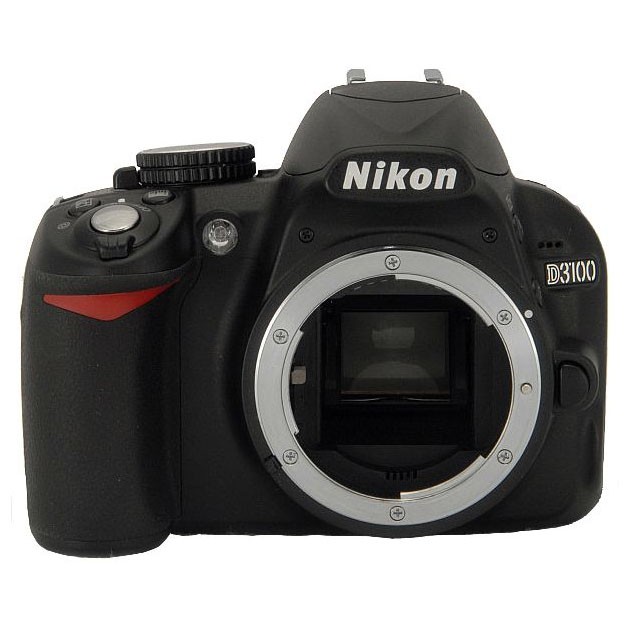
6. Has two card slots
✖Nikon D3100
✖Nikon D5000
Has two memory card slots, allowing you to store more photos without changing cards. This is especially useful for long shoots when you need more space.
7.shoots in RAW format
✔Nikon D3100
✔Nikon D5000
A RAW image file contains minimally processed sensor data. RAW files are so named because they have not yet been processed and are therefore not ready to be printed or edited with a bitmap graphics editor.
8.802.11ac WiFi interface
✖Nikon D3100
✖Nikon D5000
802.11ac wireless operates at 5GHz as well as 2.4GHz (dual-band WiFi). Offers higher data transfer rates, increased reliability and more optimal power consumption. Benefits for gaming and HD video streaming.
9.Supports lossless compressed raw
✖Nikon D3100
✖Nikon D5000
The camera can capture images in lossless compressed raw format. This gives you all the benefits of shooting in raw format, but takes up much less storage space. The smaller file size also provides faster read/write speeds.
This gives you all the benefits of shooting in raw format, but takes up much less storage space. The smaller file size also provides faster read/write speeds.
Price comparison
CancelWhich cameras are better?
This page is currently only available in English.
Nikon d3100 setting. How to set up the camera
Nikon d3100 setup How to set up the Nikon d3100 camera?
Nikon d3100 user manual in Russian read
How to properly set up the Nikon d3100 camera?
Shooting modes of the are switched by turning the dial on the top of the machine. As with any SLR camera, there is a group of PASM modes.
Programmer P: Camera automatically selects shutter speed and aperture for optimum exposure.
Aperture priority A; you set the aperture, the camera determines the shutter speed.
Shutter priority S: you set the shutter speed, the camera selects the aperture.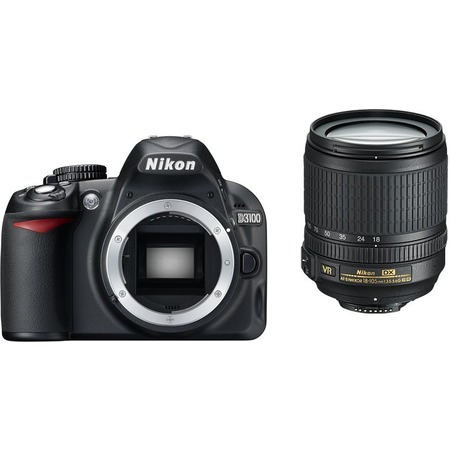
Manual mode M: Here you choose both shutter speed and aperture.
In PASM modes, you cannot entrust ISO setting to camera automation — you must set a specific ISO value, the Auto-ISO option is available only in «simplified» modes.
The green camera icon labeled AUTO on the mode dial indicates automatic, “one-button”, Auto mode. Here, almost all parameters are determined by the camera in accordance with the current situation. The flash pops up and fires automatically if the subject is poorly lit. The set of available options in this mode is limited.
A great convenience, especially for beginners, is provided by story programs. There are seven of them in the Nikon D3100, and all are placed in separate positions on the mode dial: Portrait, Landscape, Child, Sports, Macro, Night portrait and No flash. The SCENE position, which gives access to an additional set of scene programs, is not on the mode dial. Instead, there is a GUIDE mode.
GUIDE mode is a built-in help system with control functions (in of the D3000 the GUIDE name was poorly translated: «Help Menu», now the translation is better: «Help Mode»).
Nikon d3100 setup.
In GUIDE mode, the novice user, as it were, answers questions about what exactly he is going to shoot and under what conditions. Selecting options, he makes his way through the menu tree, while the camera switches the corresponding parameters. Within the menu, there is a choice between «Easy operation» and «Advanced functions». In the second case, the content deals with slightly more creative moments, giving tips on blurring the background and freezing motion (that is, on using aperture and shutter speed settings).
In the end, if you go through all the branches and get to the “Start Shooting” item, the camera switches to shooting — you can take pictures, but you formally remain in GUIDE mode and many parameters are not available, as when using scene programs.
The same principles are used in GUIDE mode when working with photo playback and camera settings. Of course, in terms of functionality, the GUIDE mode does not provide anything new in essence — it’s just that access to all functions and settings is organized through a system of hints and explanations.
Well, if a novice photographer does not just use the D3100 as a one-button soap dish (although if you wish, you can work like that, on full automatic), but tries to understand the essence of various settings, the GUIDE mode will help him take the first step in this direction. Of course, it will not become a universal textbook — the volume is still small, the simplest, basic points are considered, which are the necessary minimum for a creative approach to photography — necessary, but by no means sufficient.
Fine-tuning the Nikon D3100 camera.
Live view and movie shooting are new modes for the Nikon D3100 compared to the D3000. These modes are linked, in the sense that you first need to turn on the live view mode, and only from it you can start shooting video (and not immediately by pressing the red dot button, as in many models).
The implementation of the live view mode is very advanced.
There are four types of autofocus operation — Face Priority (see illustration on the left, yellow frame on the face), Wide Area, Normal Area and Subject Tracking (green frame in the illustrations — it turns red if the subject is lost).
Switching between these options is not the most efficient, through the menu.
Use the (–) and (+) buttons to zoom in on the area where autofocus has been triggered.
Pressing the «i» button displays the normal control panel where you can change shooting settings without leaving Live View mode.
Pressing the red dot button starts movie recording.
Autofocus works in the mode set in the menu (see above).
It’s especially cool that you can quickly control the exposure parameters — you can switch modes by rotating the mode dial; by selecting modes A or S, you can use the wheel to change the aperture value or shutter speed.
The exposure compensation button also works — all these settings can be changed without interrupting the video recording.
[ads-pc-1]
In playback mode, the OK button starts the video playback.
The top of the screen displays the current and full time. Use the (–) and (+) buttons to adjust the sound volume.
Use the (–) and (+) buttons to adjust the sound volume.
Navigator keys turn into a «tape drive» control, allowing you to fast forward and backward the video, pause playback, and move forward and backward frame by frame in pause mode.
There is a video editor.
Its capabilities, as almost always in video editors built into cameras, are minimal — you can cut off the excess, as well as save a single frame, selected and stopped in pause mode.
How to properly set up a Nikon D3100 camera?
Rent and rental camera Nikon D3100 Kit
Specifications:
Matrix
- Total number of pixels 14.8 million
- Effective pixels 14.2M
- Physical size 23.0 x 15.5 mm
- Crop factor 1.5
- Maximum resolution 4608 x 3072
- CMOS sensor type
- Sensitivity 100 — 3200 ISO, Auto ISO, ISO6400, ISO12800
- Sensor cleaning function yes
Features
- White balance automatic, manual, from list
- Built-in flash, up to 12 m, red-eye reduction, shoe, sync contact
- Image stabilizer (still image) not available
Shooting modes
- Shooting speed 3fps
- Timer yes
- Timer 2 running time, 10 s
- Aspect ratio (still image) 3:2
Lens
- Interchangeable lens support Nikon F 9 mount0004
- Lens included
Viewfinder and LCD screen
- Reflex viewfinder (TTL)
- Using the screen as a viewfinder Yes
- Viewfinder field of view 95%
- LCD screen 230000 pixels, 3″
Exposure
- Shutter speed 30 — 1/4000 s
- Speed X-Sync 1/200 c
- Manual shutter speed and aperture yes
- Shutter-priority auto exposure processing, aperture-priority
- Exposure compensation +/- 5 EV in 1/3 steps
- Metering 3D color matrix, center-weighted, spot
Focusing
- AF illuminator yes
- Manual focus yes
- Autofocus correction yes
Memory and interfaces
- Memory card type SD, SDHC, SDXC
- Image formats JPEG, RAW
- Interfaces USB 2.
 0, video, HDMI, audio, remote control connector
0, video, HDMI, audio, remote control connector
Power supply
- Battery format own
- Battery capacity 550 photos
Video and sound recording
- Video recording yes
- Video recording format AVCHD, MOV
- Video codecs AVC/H.264, MPEG4
- Maximum video resolution 1920×1080
- Maximum movie frame rate 30 fps
- Maximum frame rate when shooting HD video 30 fps at 1280×720, 24 fps at 1920×1080
- Sound recording 10 minutes
- Voice memo recording yes
Other functions and features
- Additional features tripod mount, remote control
- Additional information LiveView mode
Dimensions and weight
- Size 125x97x74 mm, without lens
- Weight 505 g, with batteries; without lens
We make a special offer for those people who need to rent a camera Nikon D3100 Kit and more. Our company provides a wide range of models — from small cameras to digital giants!
Our company provides a wide range of models — from small cameras to digital giants!
If you are interested in buying a camera, but want to try it out first, if you have an important shoot coming up, but your lens bag is left in the office if you “really need it”, and there is not enough money to buy it if you are on vacation in Moscow and were too lazy to drag kilograms of photographic equipment with you, then the best way out of this situation is to visit our company, which will provide you with professional digital cameras and accessories for rent.
Renting a camera Nikon D3100 Kit is the right decision in this situation. By renting a Nikon D3100 Kit camera, you will get rid of unnecessary expenses, as our Nikon D3100 Kit camera rental company sets prices depending on the model, its characteristics and appearance.
If you want to take beautiful pictures while relaxing on vacation, the Nikon D3100 is the perfect choice for a professional SLR camera.
Our company, for which the rental of photographic equipment is one of the services provided, offers the Nikon D3100 Kit camera for rent, because it is very convenient and easy to use. This option can satisfy both a professional and a beginner photographer, ideal for the whole family.
This option can satisfy both a professional and a beginner photographer, ideal for the whole family.
When you rent a Nikon camera, you can enjoy its large, high-resolution LCD monitor. In reference mode, it is quite easy to force the formation of unique shots in any situation: whether it is a portrait of the whole family or a high-quality shot of restless, running kids. The D-movie function is a great opportunity to record high-quality video, capture special events in the appropriate quality, and automatically save the details of the illuminated and dark parts of the photo. The camera you’ll want to rent has the advanced EXPEED 2 photo processing system, a wide range of movie recording options, increased sensitivity and superb image quality. All in all, this super lightweight DSLR will help you capture great family shots in a variety of conditions.
Our company DeLight Studio rents photographic equipment in Moscow both for people who are professionals in the field of photography and for beginners in this business. The camera rental service provided by our company in Moscow will give you an excellent opportunity to become a photographer for a reasonable price for the required period for which you wish to order a camera rental. Renting cameras in Moscow or renting a camera in Moscow is a fairly new offer in the service sector provided by our company. You will get a unique opportunity to keep the most vivid and unique events of your life for a long memory and, most importantly, save money on buying expensive photographic equipment or when ordering a professional photographer.
The camera rental service provided by our company in Moscow will give you an excellent opportunity to become a photographer for a reasonable price for the required period for which you wish to order a camera rental. Renting cameras in Moscow or renting a camera in Moscow is a fairly new offer in the service sector provided by our company. You will get a unique opportunity to keep the most vivid and unique events of your life for a long memory and, most importantly, save money on buying expensive photographic equipment or when ordering a professional photographer.
Operating Instructions: Nikon D3100
Camera CameraDigital camera
Detailed user guide
RU
Page:
( 1 of 224)
one
2
3
four
5
6
9049eight 7eight
9
ten
eleven
12
13
fourteen
fifteen
16
17
eighteen
19
twenty
21
22
23
24
25
26
27
28
29
thirty
31
32
33
34
35
36
37
38
39
40
41
42
43
44
45
46
47
48
49
fifty
51
52
53
54
55
56
57
58
59
60
61
62
63
64
65
66
67
68
69
70
71
72
73
74
75
76
77
78
79
80
81
82
83
84
85
86
87
88
89
90
91
92
93
94
95
96
97
98
99
100
101
102
103
104
105
106
107
108
109
110
111
112
113
114
115
116
117
118
119
120
121
122
123
124
125
126
127
128
129
130
131
132
133
134
135
136
137
138
139
140
141
142
143
144
145
146
147
148
149
150
151
152
153
154
155
156
157
158
159
160
161
162
163
164
165
166
167
168
169
170
171
172
173
174
175
176
177
178
179
180
181
182
183
184
185
186
187
188
189
190
191
192
193
194
195
196
197
19eight
199
200
201
202
203
204
205
206
207
208
209
210
211
212
213
214
215
216
217
218
219
220
221
222
223
224
Instruction table of contents
- FAQ
- Contents
- Safety measures
- Notices
- Introduction
- General
- Getting to know the camera
- Camera body
- Mode dial
- Shooting mode switch
- Information screen
- Control dial
- Viewfinder
- Camera menu
- Using the camera menus
- Before you start
- Charge battery
- Insert battery
- Install lens
- Basic settings
- Inserting a memory card
- Formatting the memory card
- Viewfinder focus adjustment
- Taking and viewing pictures
- Point-and-Shoot Shooting (Auto and Auto (Flash Off) Modes)
- Step 1: Turn on the camera
- Step 2: Select Auto or Auto (flash off) mode
- Step 3: Frame
- Step 4: Focusing
- Step 5: Remove
- Creative shooting (Scene modes)
- Portrait
- Landscape
- Child
- Sport
- Macro
- Night portrait
- View
- Erase unwanted pictures
- Point-and-Shoot Shooting (Auto and Auto (Flash Off) Modes)
- Help mode
- Help (Guide)
- Help mode menu
- Live View
- Aiming pictures on the monitor
- Recording and viewing videos
- Movie recording
- Viewing videos
- Movie editing
- Trimming videos
- Save selected frames
- Shooting mode
- Shooting mode selection
- Self-timer mode
- Learn more about photography (all modes)
- Focus
- Focus mode
- AF area mode
- Focus point selection
- Focus lock
- Manual focus
- Image quality and size
- Image quality
- Image size
- Using the built-in flash
- Flash mode
- Sensitivity ISO
- Focus
- P, S, A and M modes
- Shutter speed and aperture
- P Mode (Programmed Auto)
- Mode S (Auto with output priority)
- Mode A (Aperture Priority Auto)
- Mode M (Manual)
- Exposure
- Exposure meter
- Auto exposure lock
- Exposure compensation
- Flash compensation
- Active D-Lighting
- White balance
- White balance fine tuning
- Manual setting
- Picture Controls
- Select Picture Control
- Changing Picture Controls
- GPS device GP-1
- Shutter speed and aperture
- Learn more about viewing pictures
- Full-frame playback
- Image info
- View thumbnail images
- Calendar display
- Close-up View Zoom
- Protect pictures from deletion
- Deleting pictures
- Full-frame playback, thumbnail playback, calendar playback
- View menu
- Slide show
- Full-frame playback
- Connections
- Computer connection
- Before connecting the camera
- Camera connection
- Print pictures
- Printer connection
- Print pictures one by one
- Printing multiple pictures
- Create a sketch sheet
- Create DPOF print order: Print order
- Viewing pictures on a TV screen
- SD devices
- High definition devices
- Computer connection
- Information about menu options
- Playback menu: Image management
- View folder
- Display mode
- Image review
- Rotate vertical
- Shooting menu: Shooting options
- Reset shooting settings
- Sense settings.
 ISO
ISO - Aut. ex. distort mi
- Color space
- Noise suppression
- AF illuminator
- Built-in flash
- Setup menu: Camera setup
- Reset settings
- LCD brightness
- Info output format
- Aut. display inf.
- Video standard
- Flicker suppression
- Time zone and date
- Language
- Comment
- Aut. frame rotation
- Ref. for ud. dust
- Auto timers off
- Self-timer delay
- Signal
- Rangefinder
- Last numbering files
- Buttons
- Block. descent without map
- Date imprint
- Storage folder
- Eye-Fi download
- Firmware version
- Retouch menu: Create retouched copies
- Making retouched copies
- D-Lighting
- Correction “red. eye”
- Cropping
- Monochrome
- Filter effects
- Color balance
- Small picture
- Image overlay
- NEF (RAW) processing
- Fast processing
- Alignment
- Rect.

- Playback menu: Image management

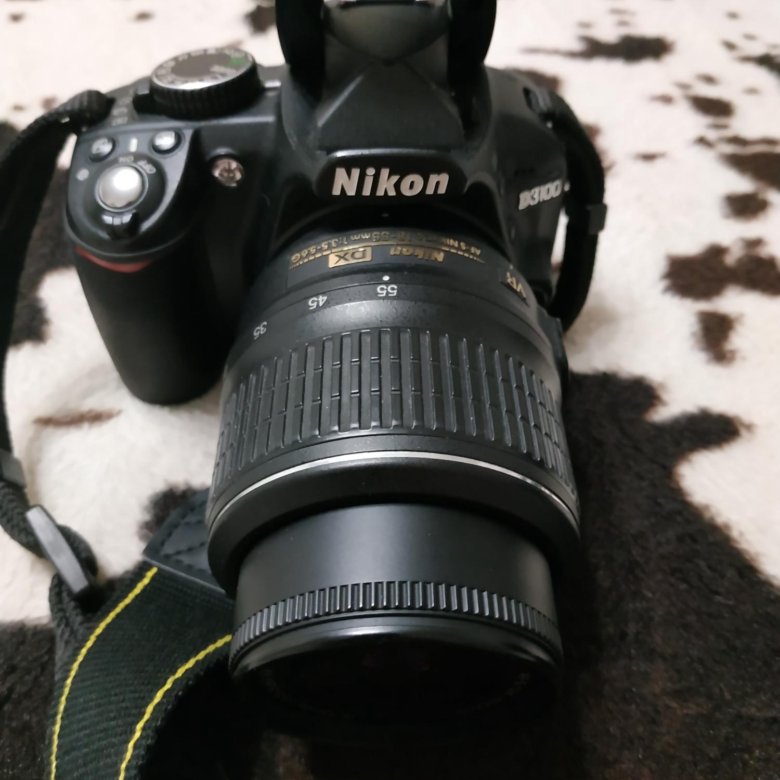 ..
..
 Or if in lack, use an empty plastic bottle, without moisture inside, and use it to blow on the autofocus sensors.
Or if in lack, use an empty plastic bottle, without moisture inside, and use it to blow on the autofocus sensors. ISO
ISO distortion
distortion 33% faster high-resolution JPEG shooting with autofocus?
33% faster high-resolution JPEG shooting with autofocus?  0, video, HDMI, audio, remote control connector
0, video, HDMI, audio, remote control connector ISO
ISO